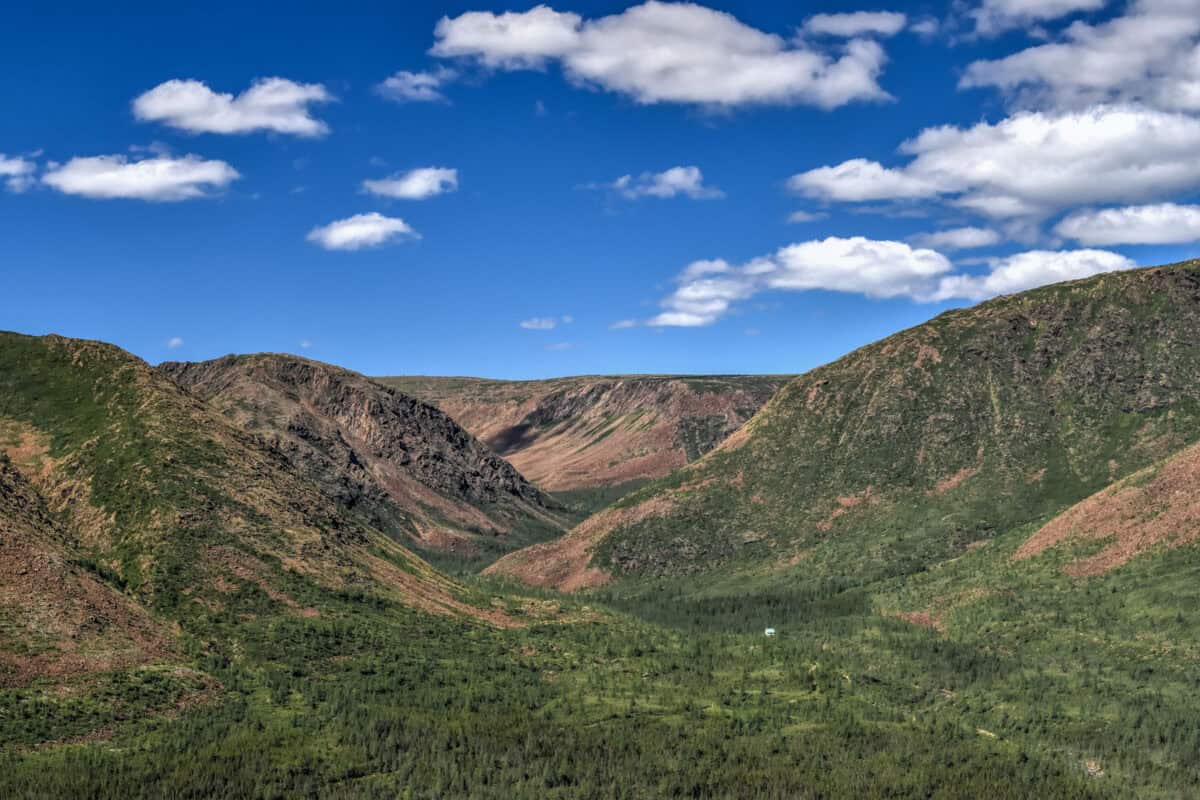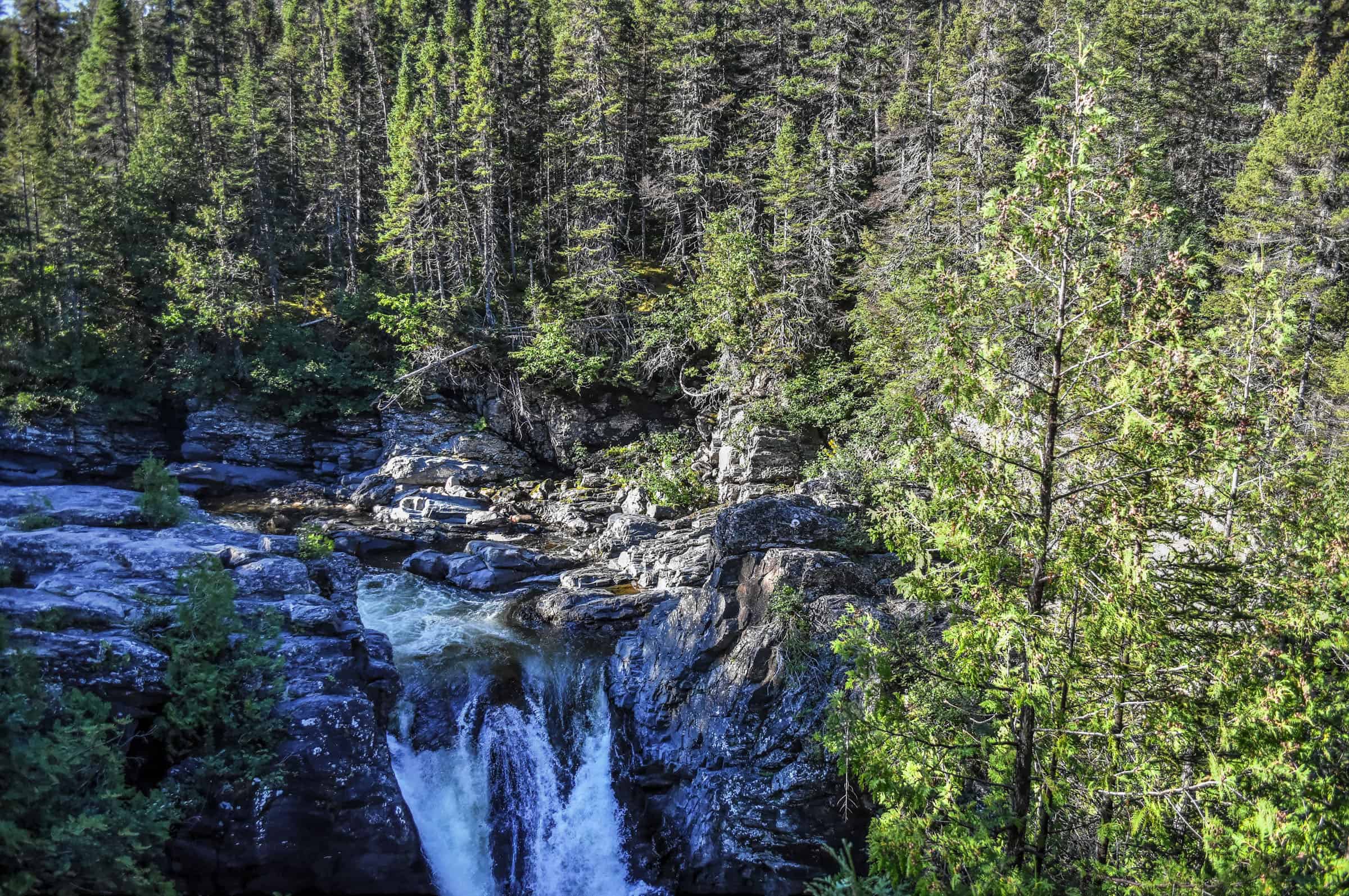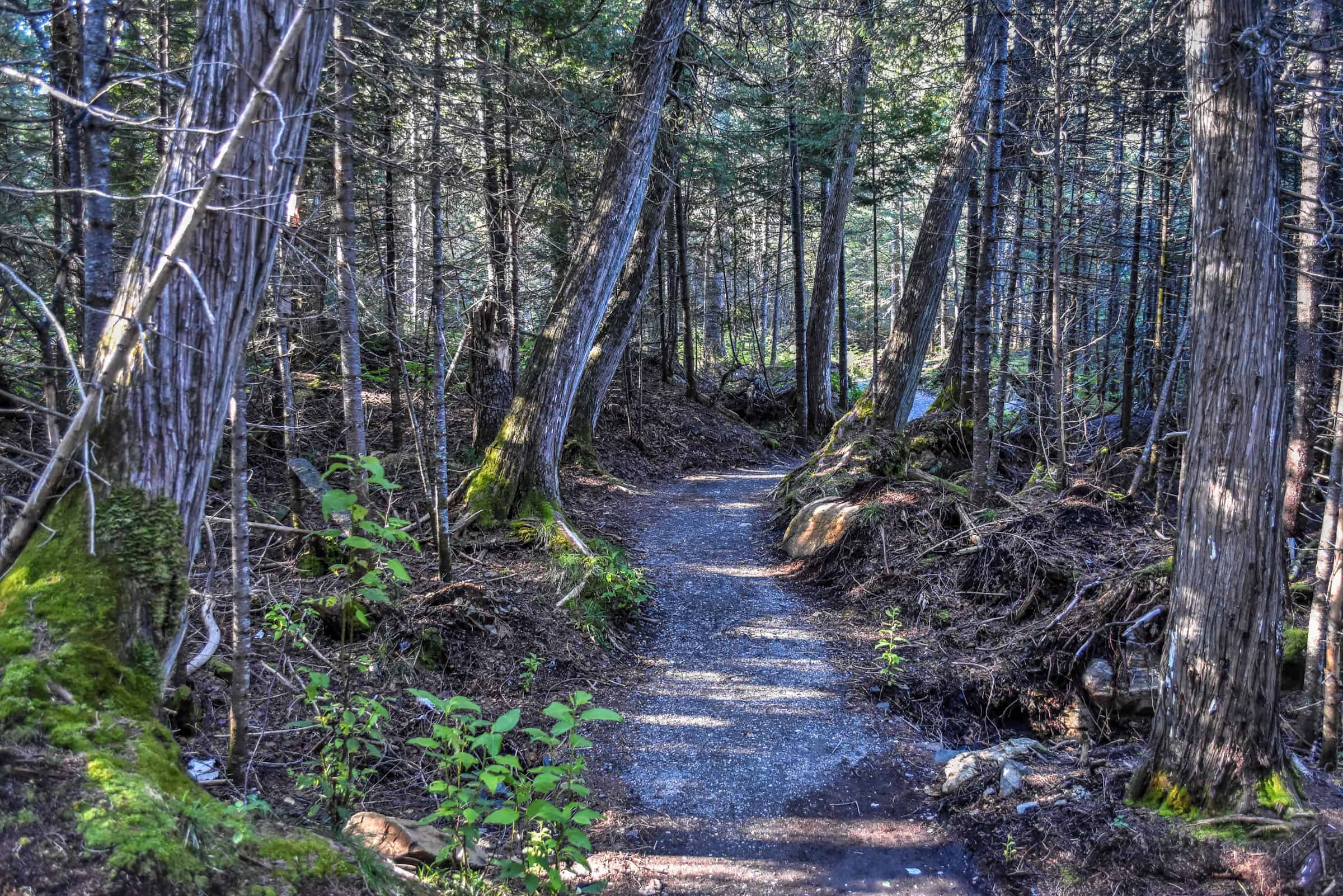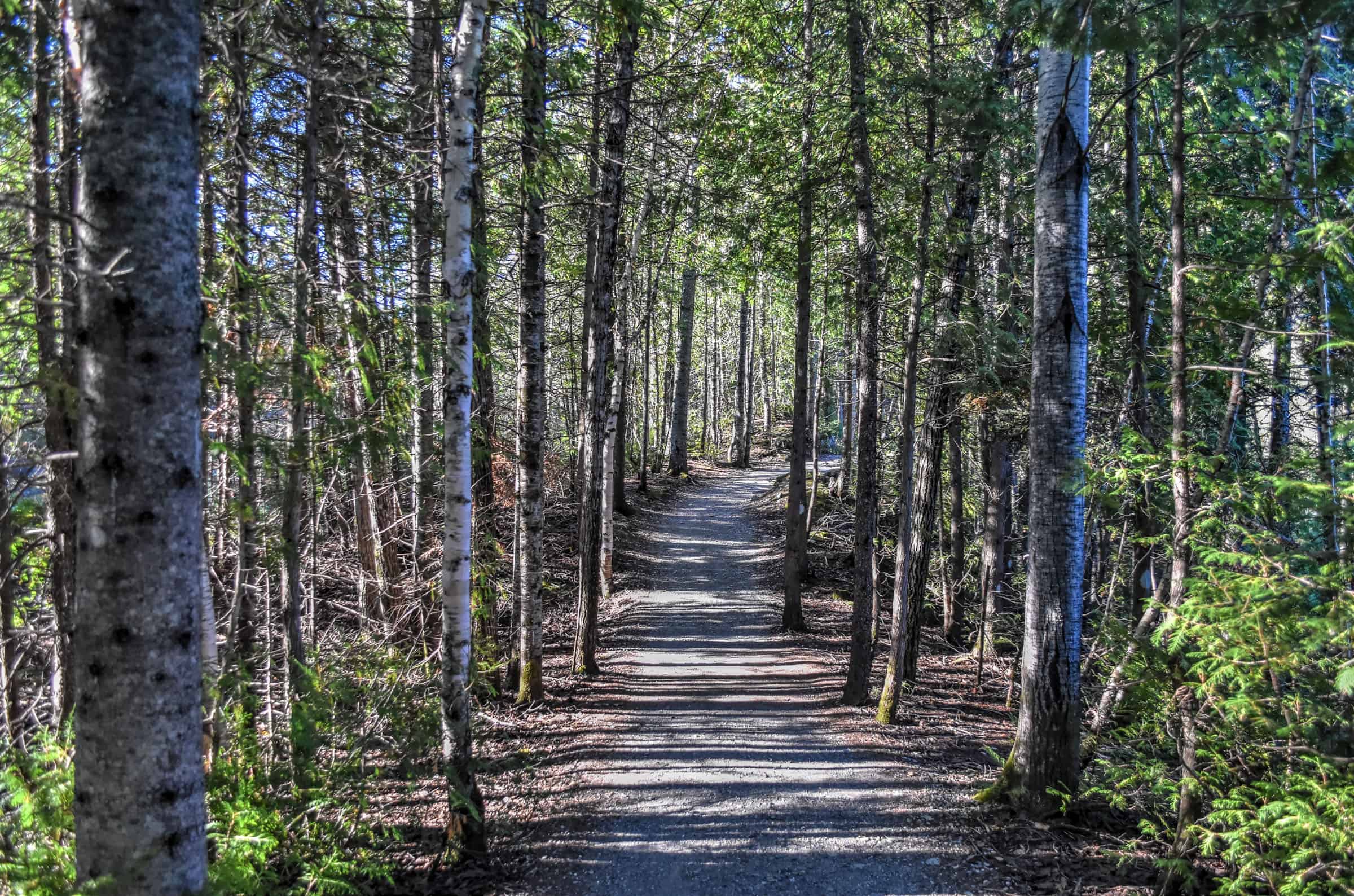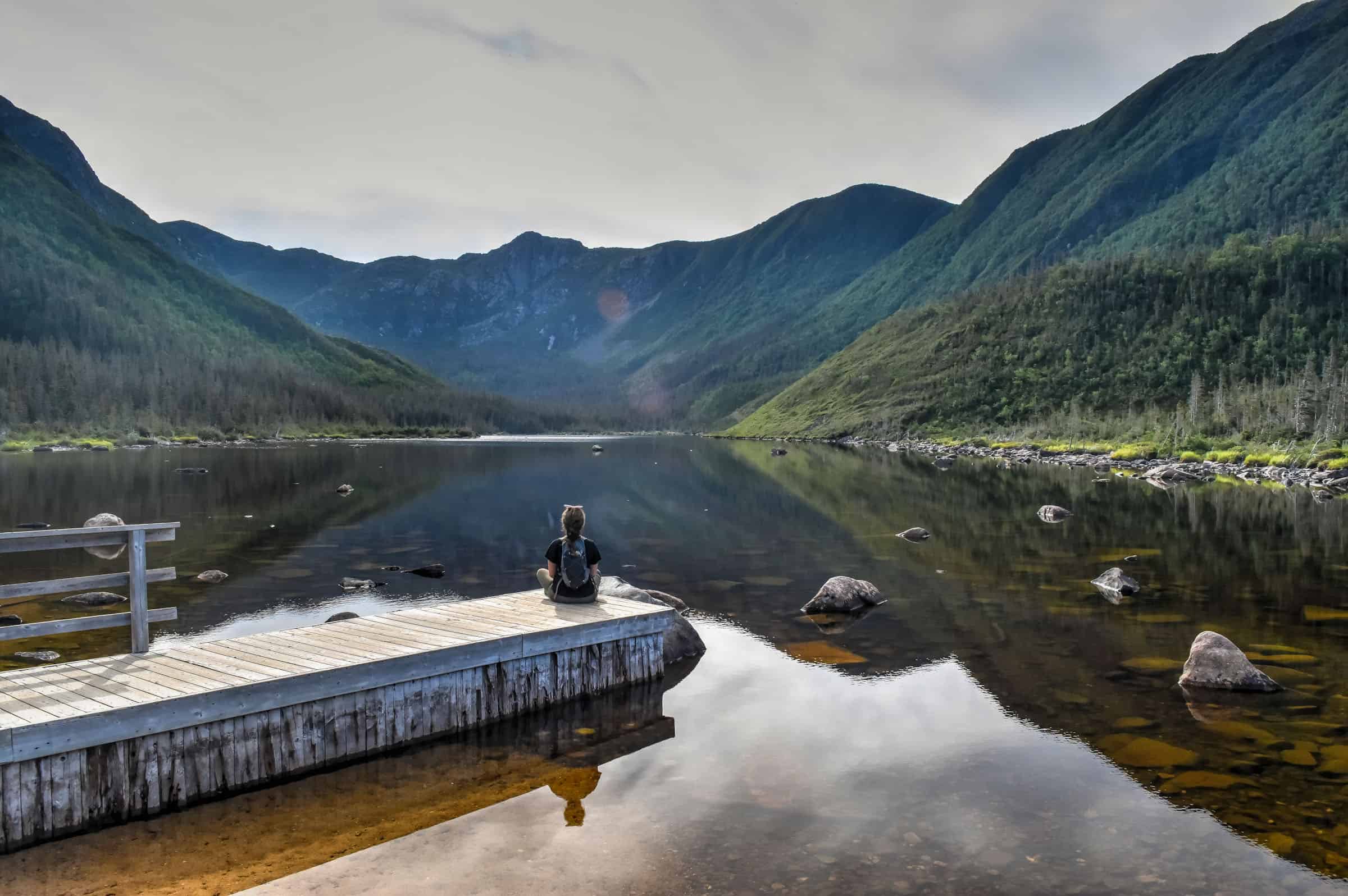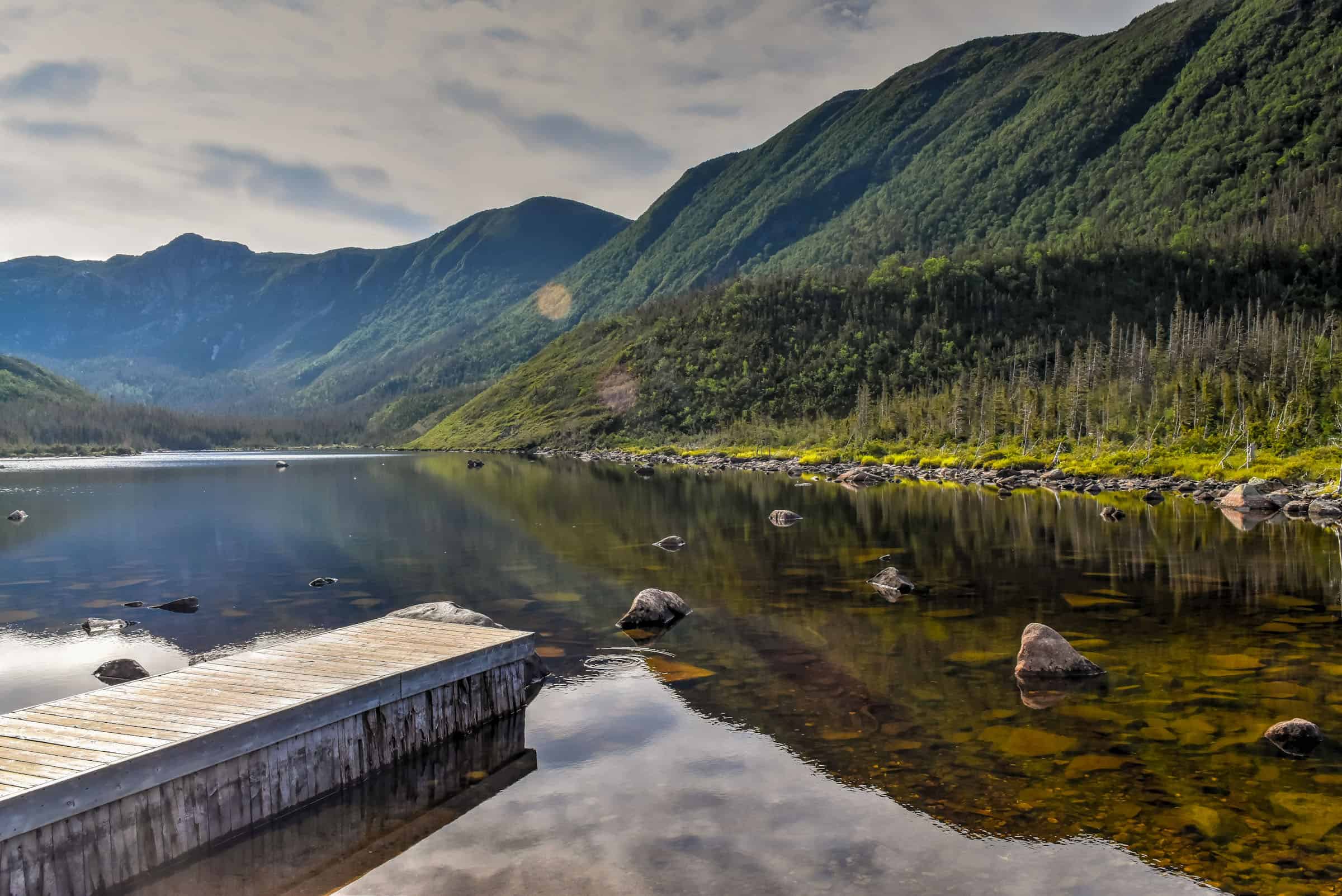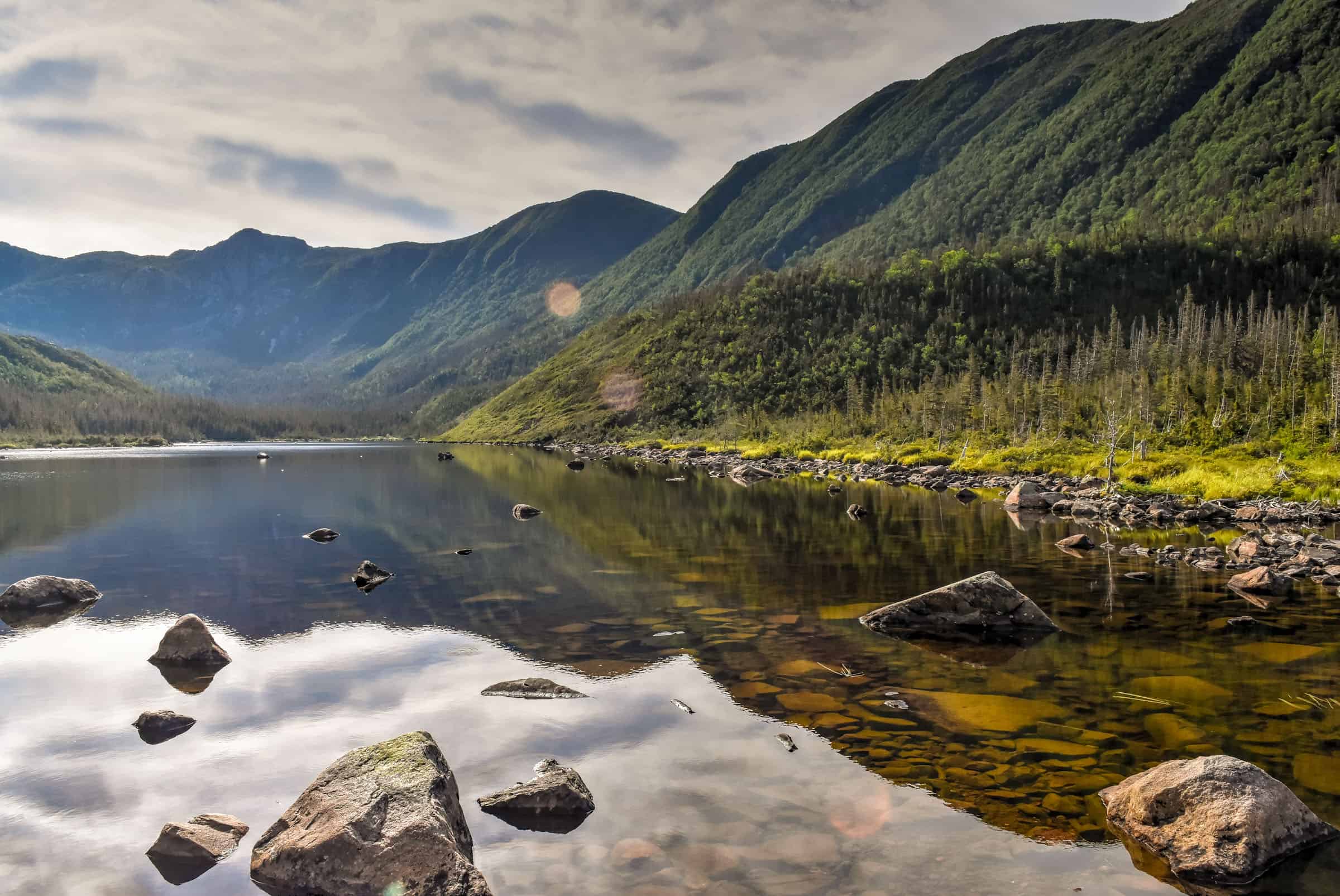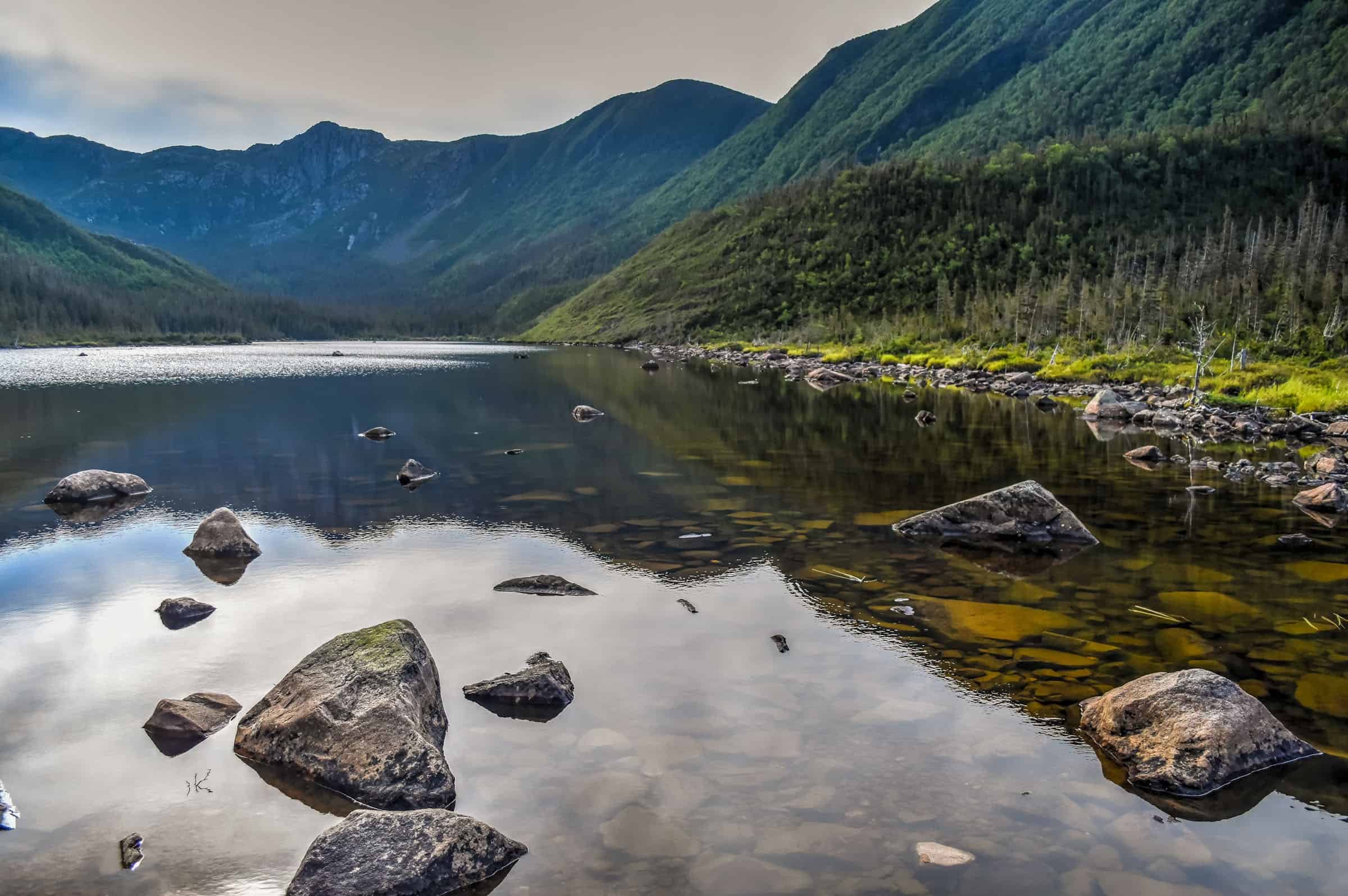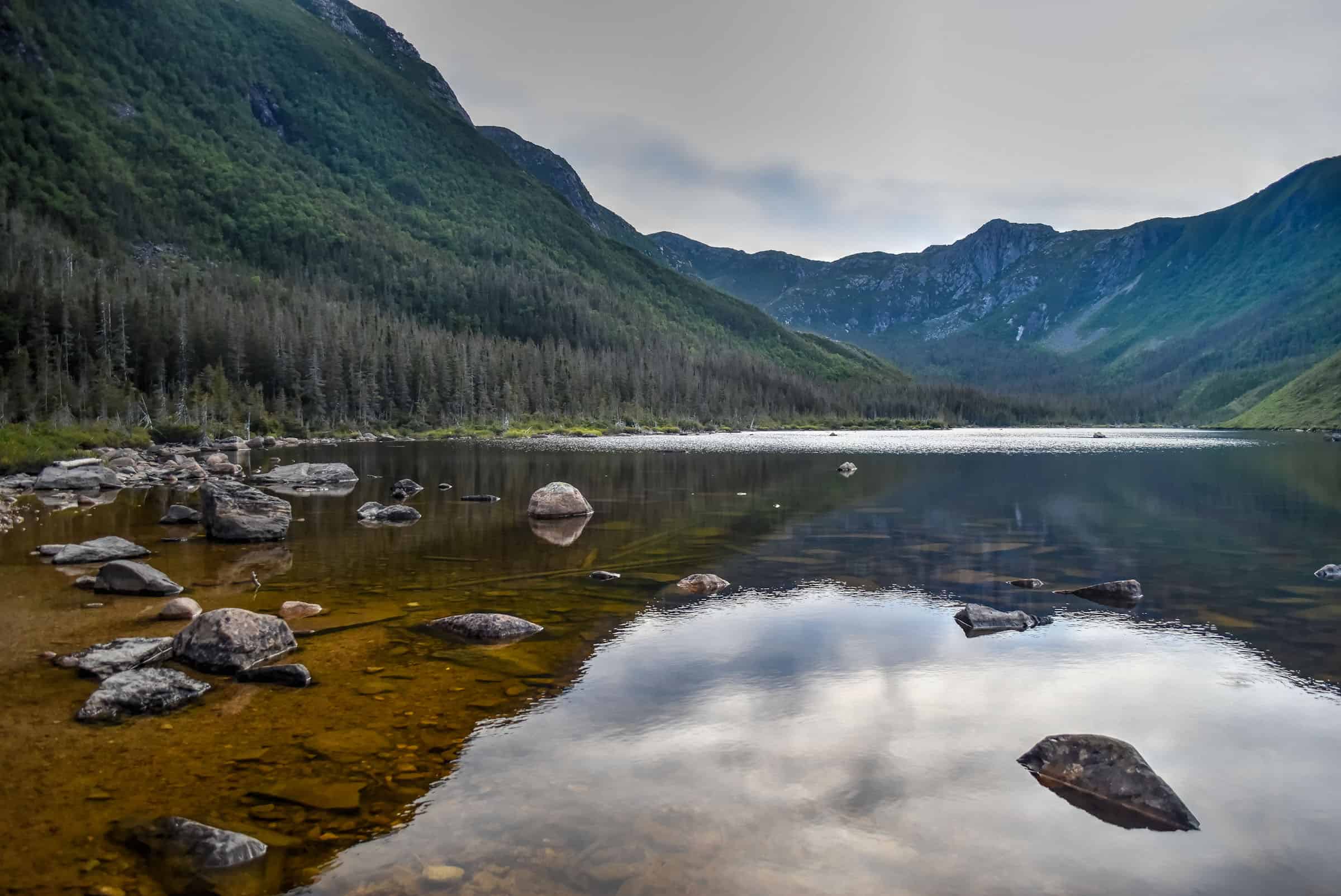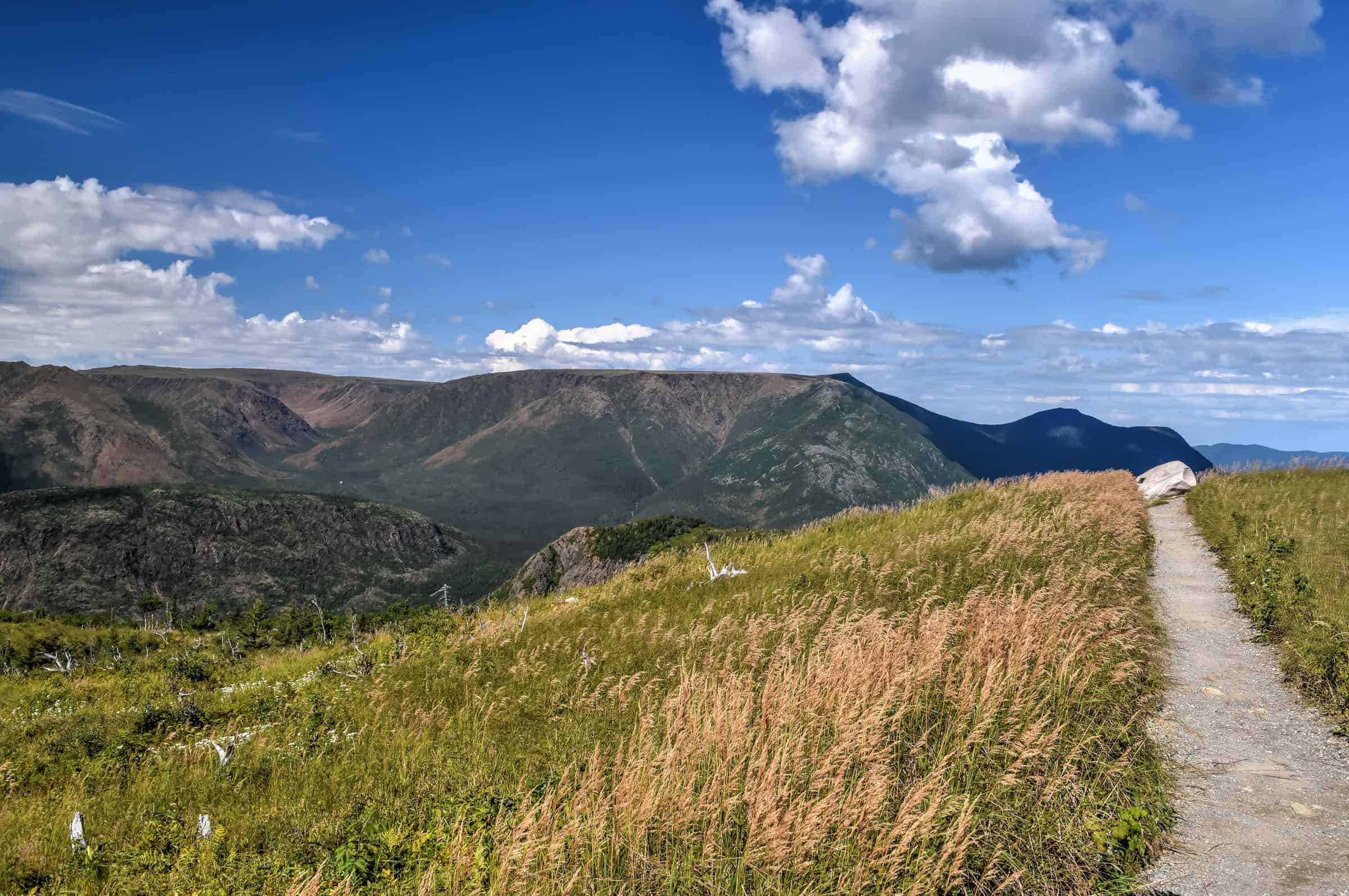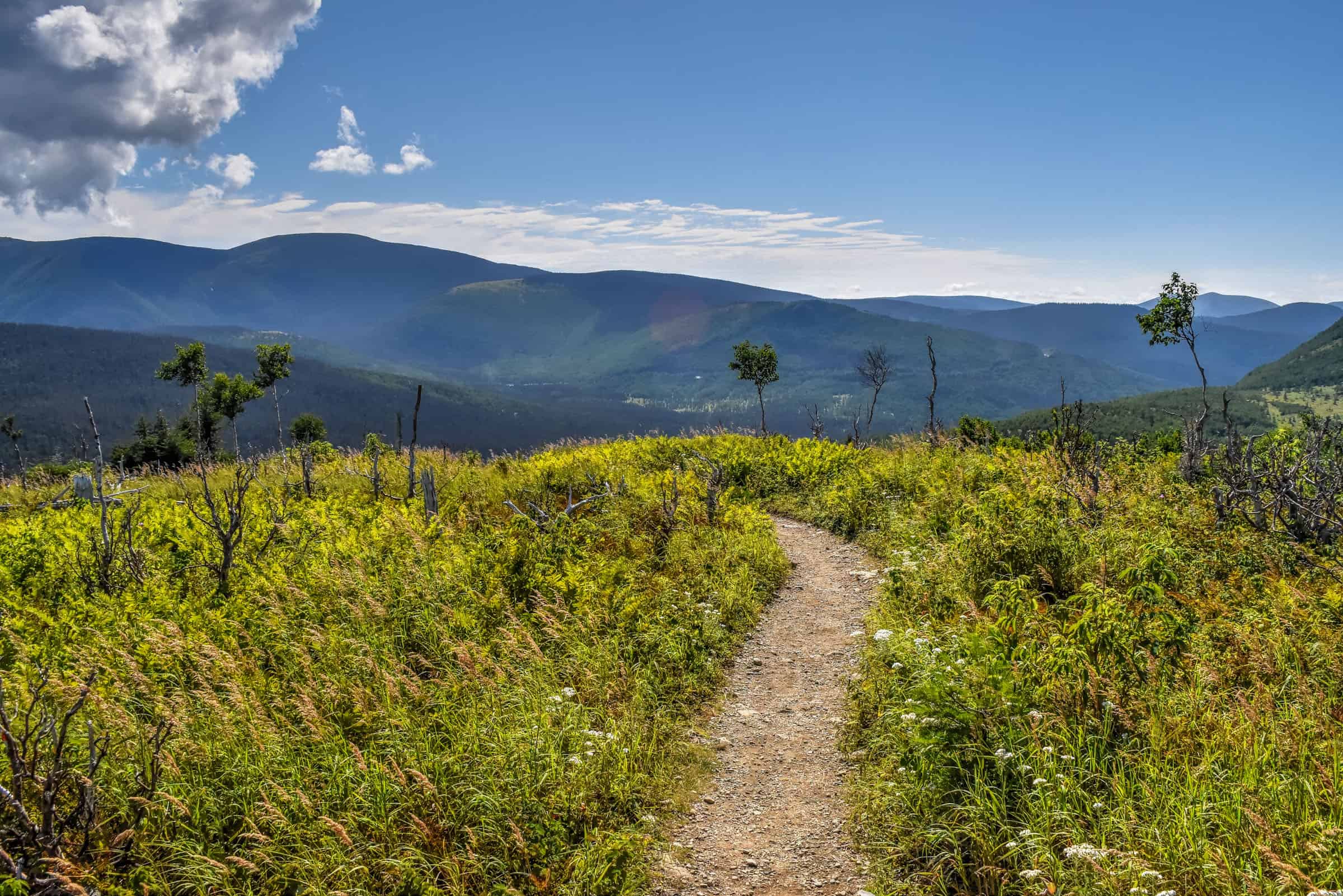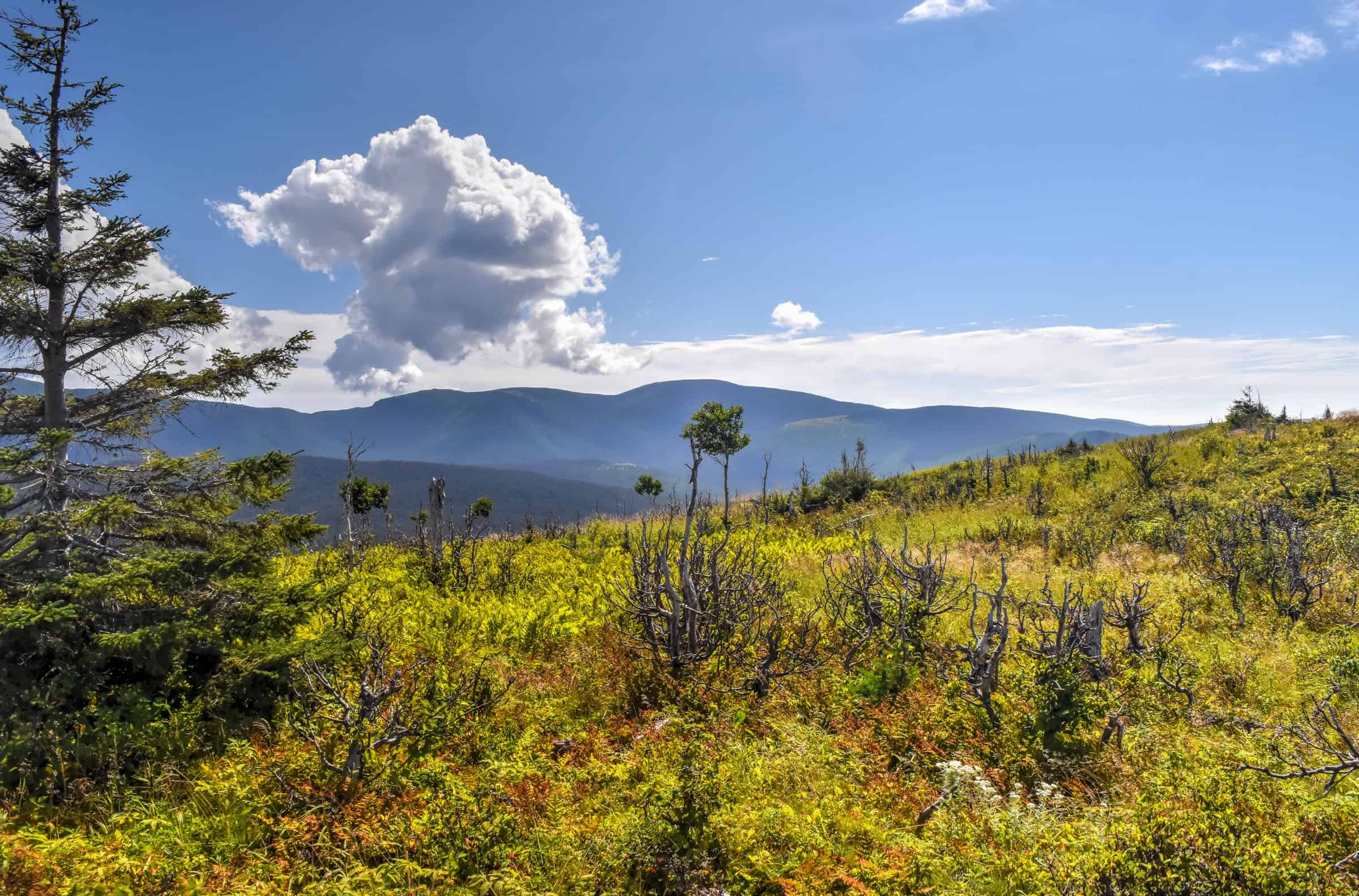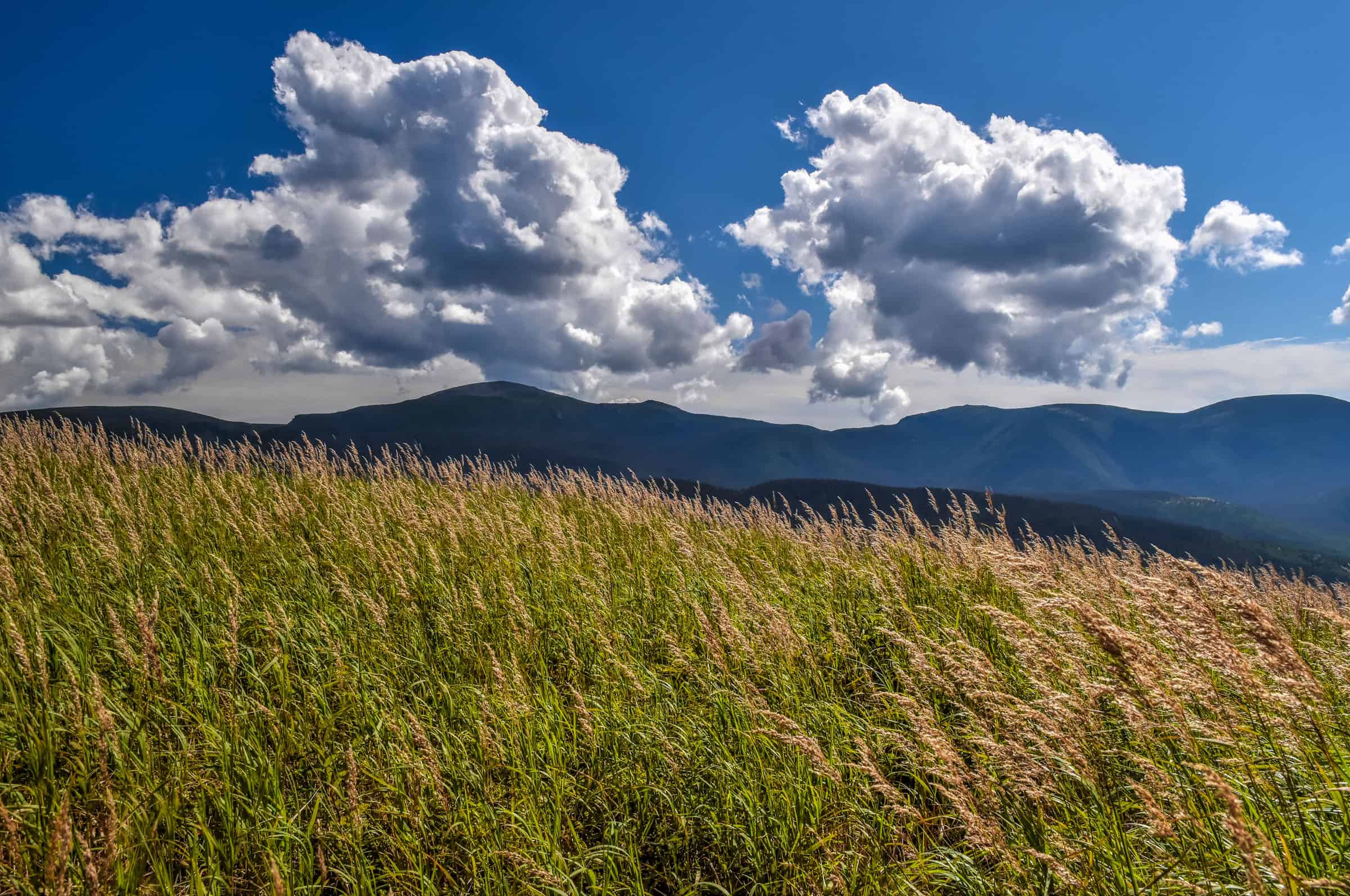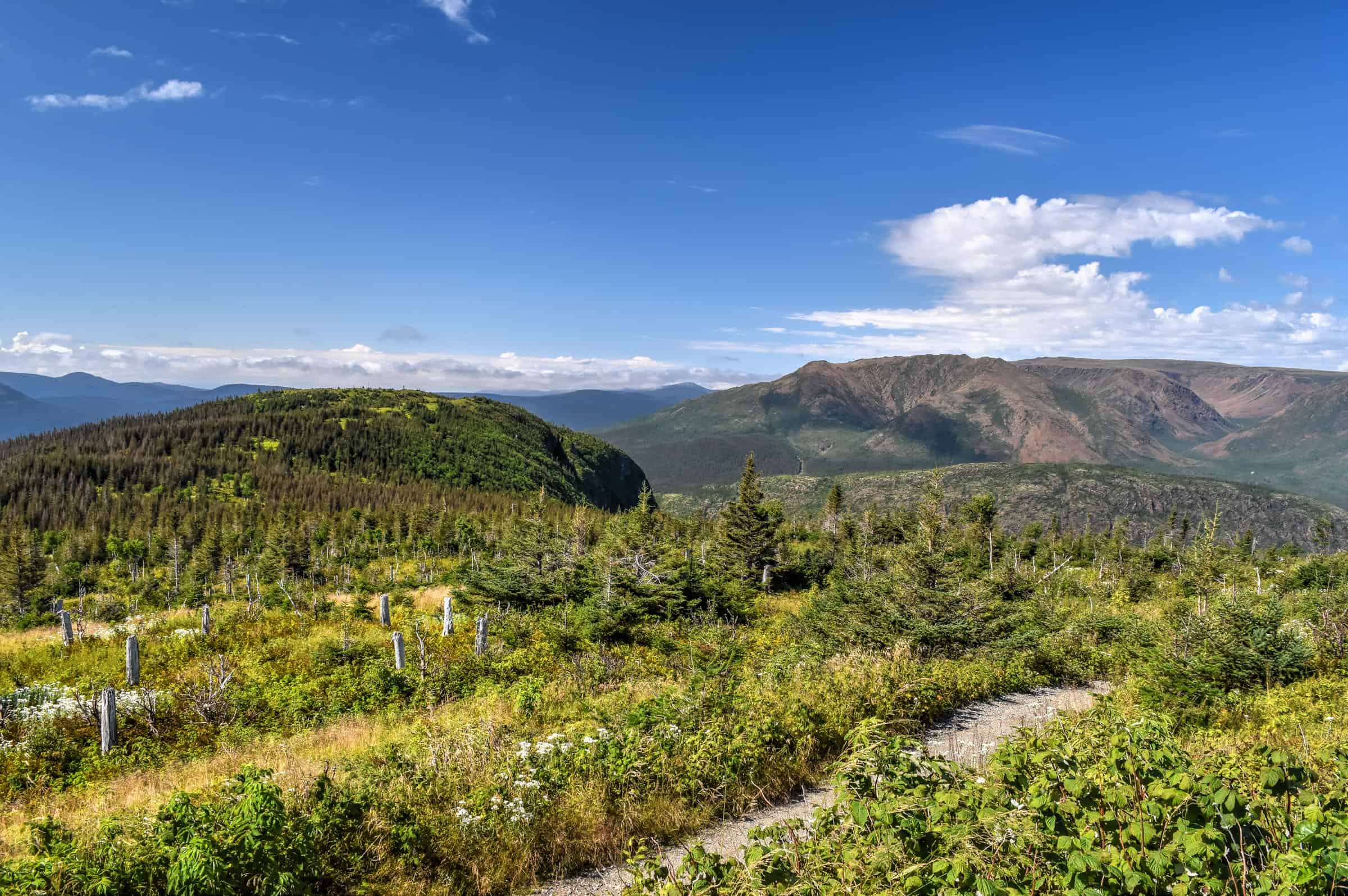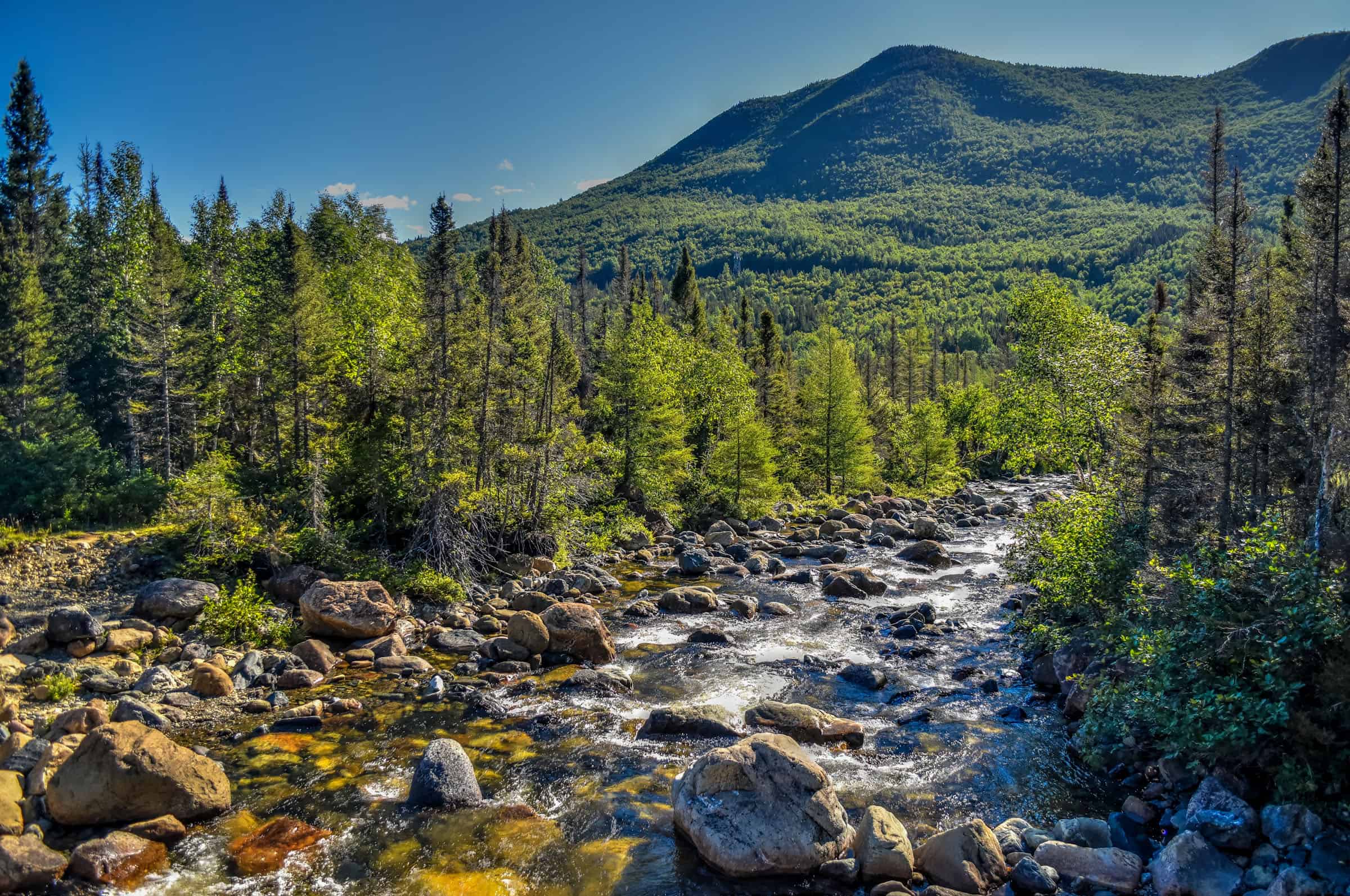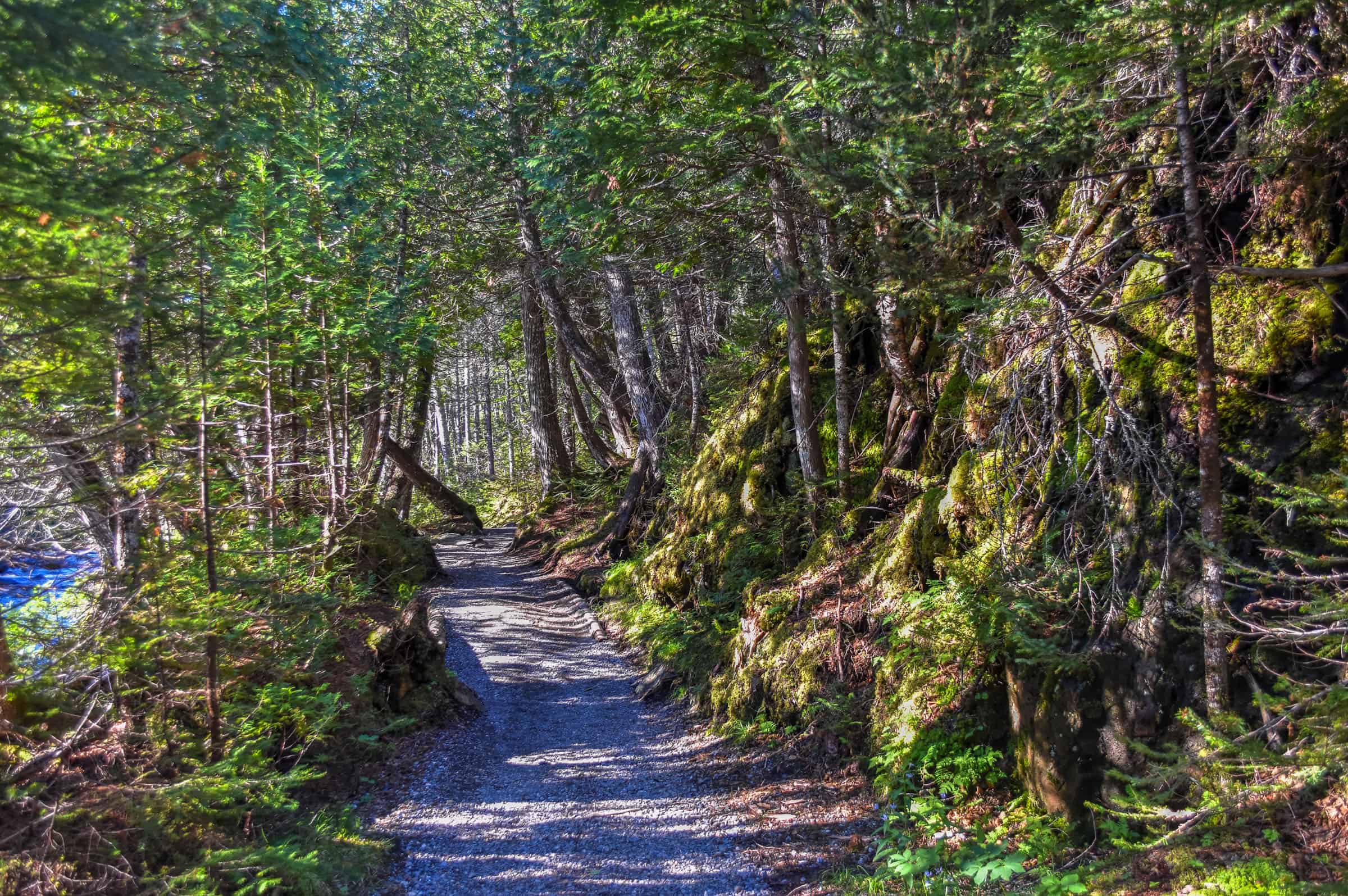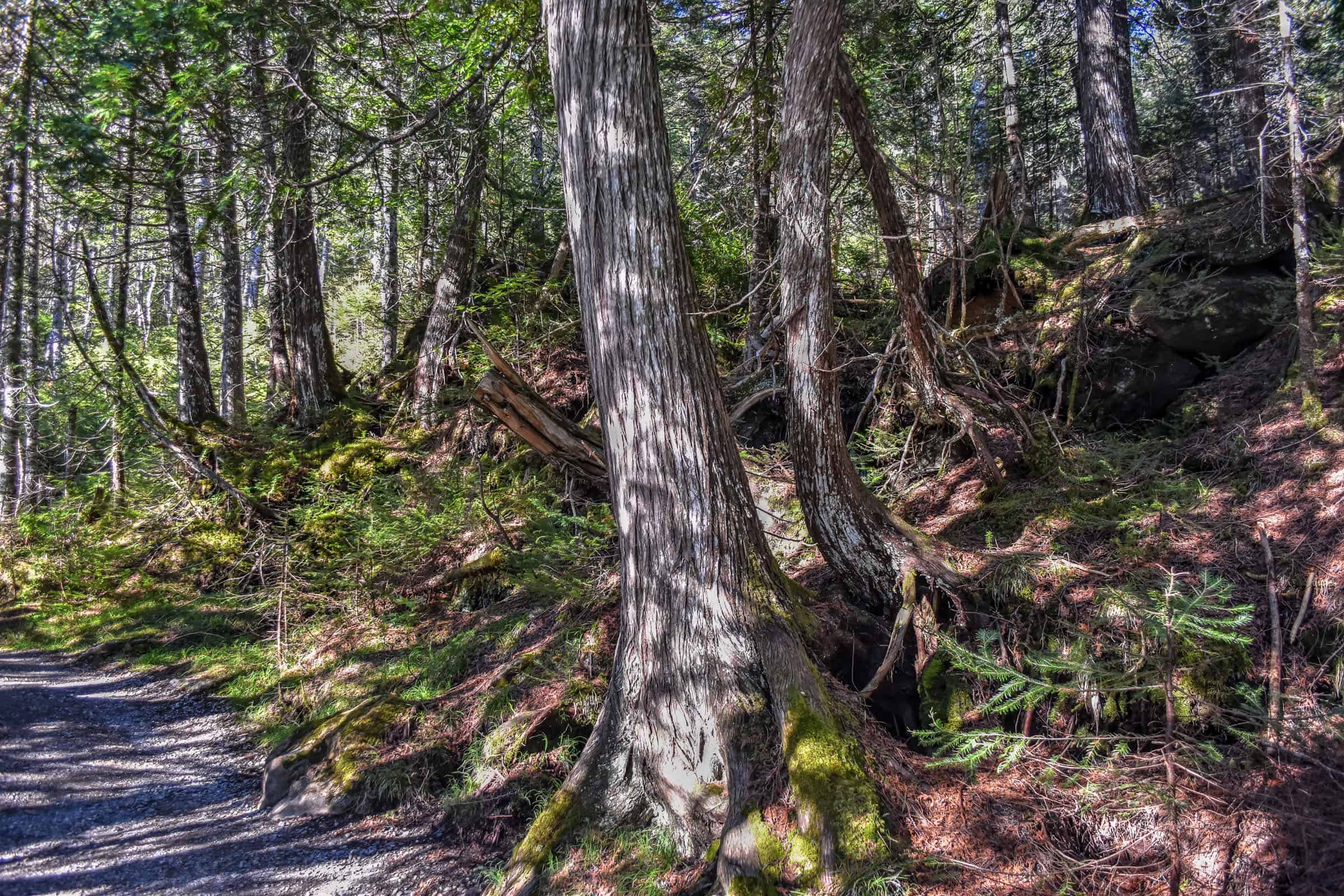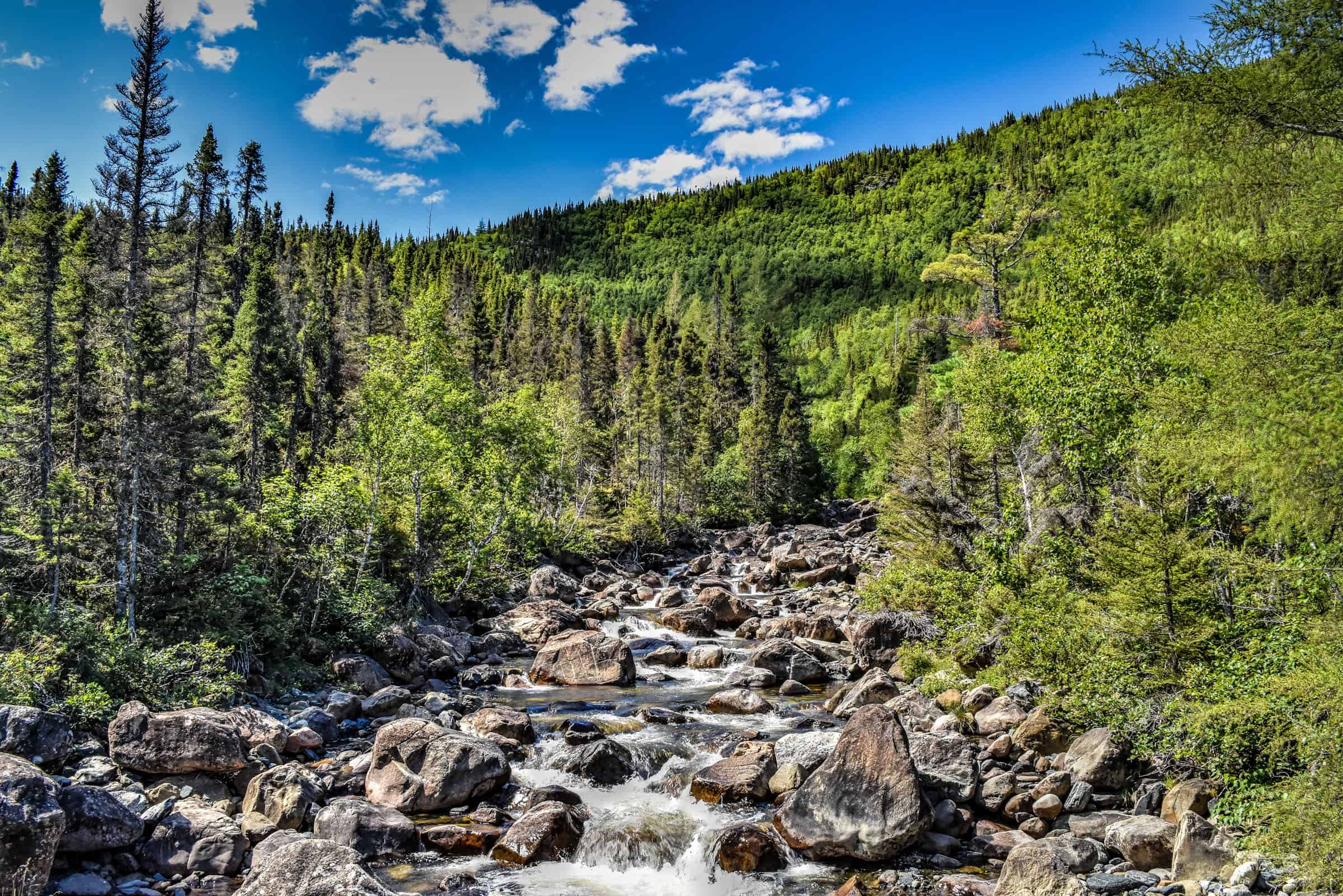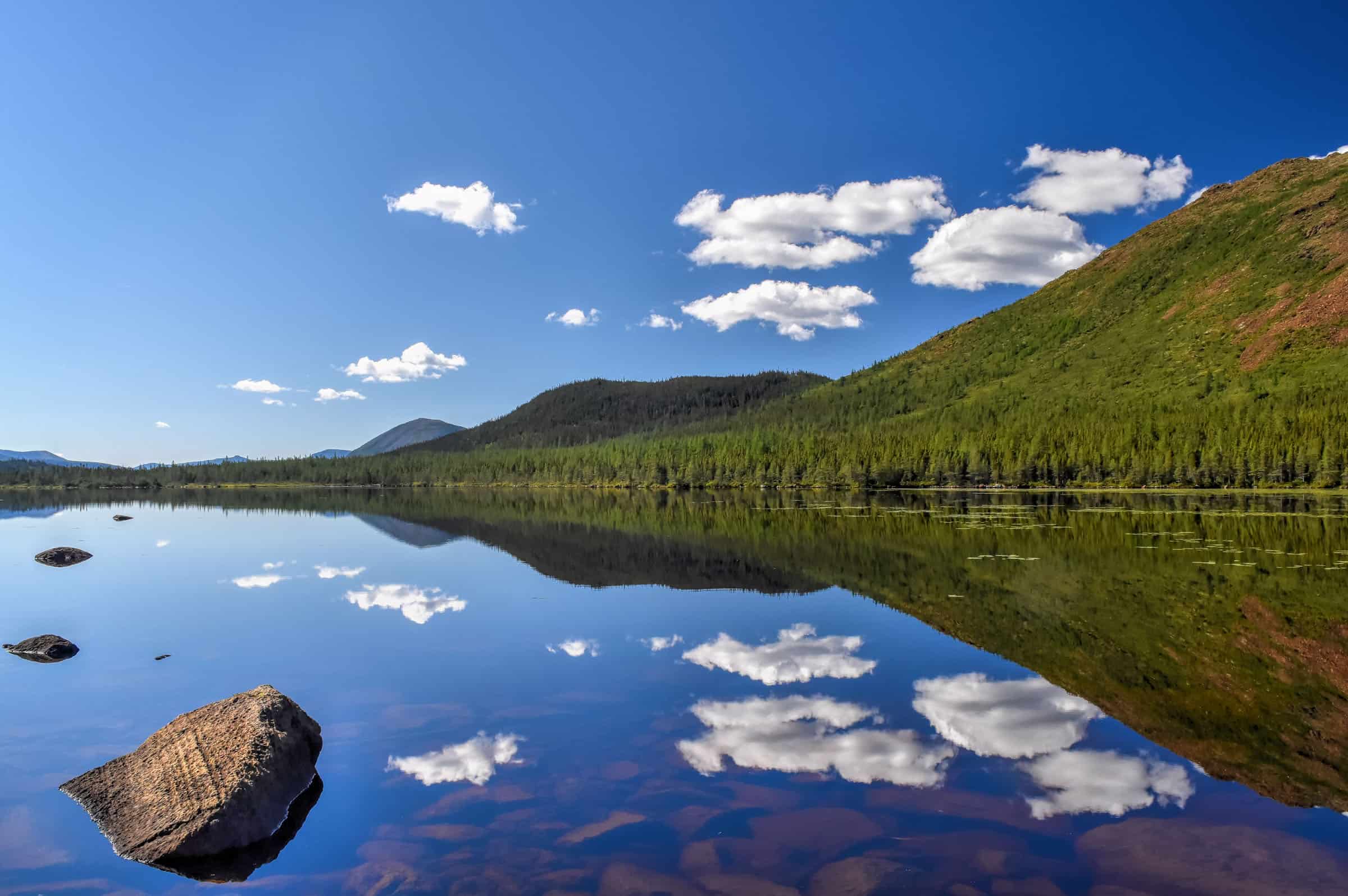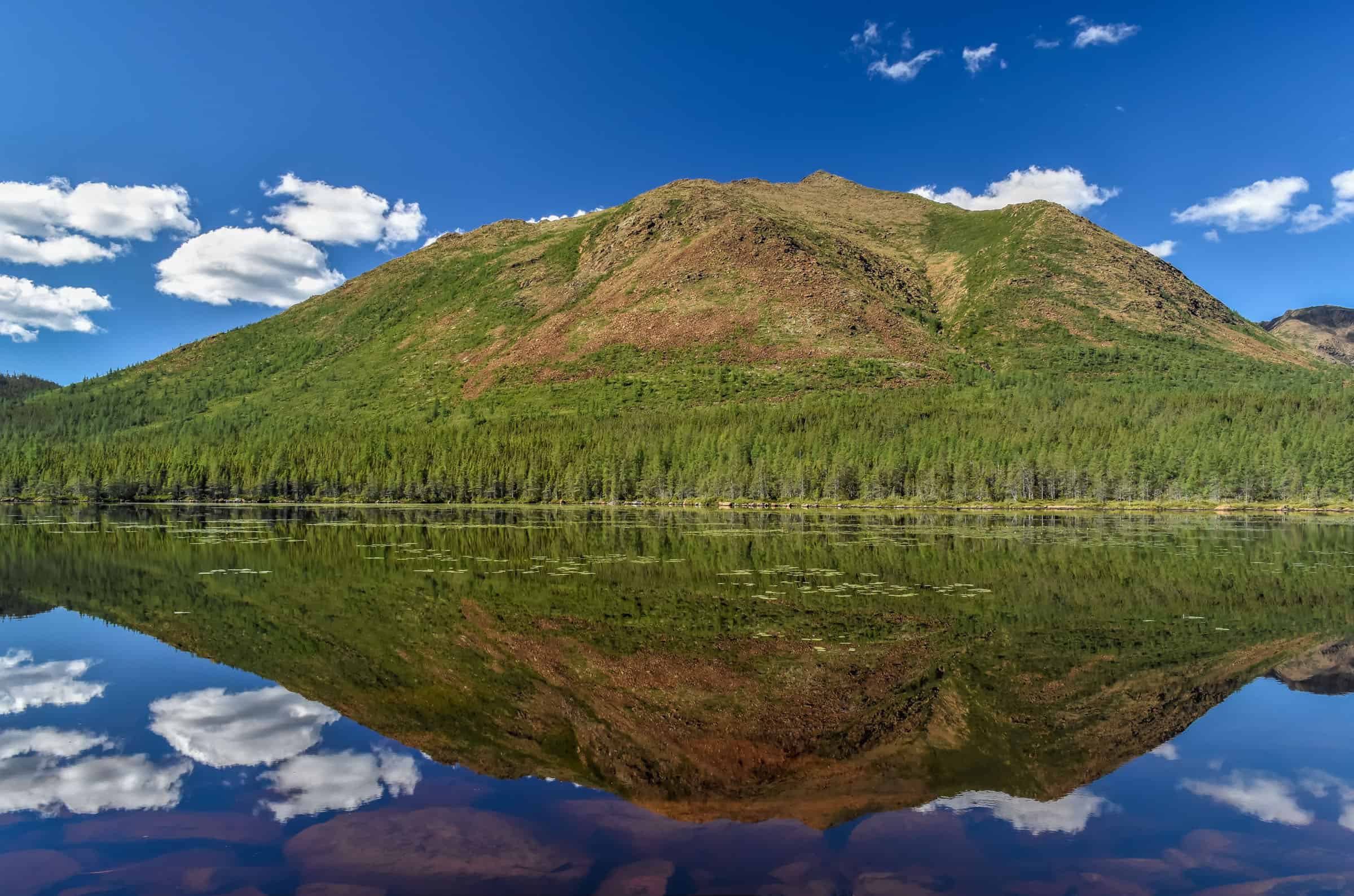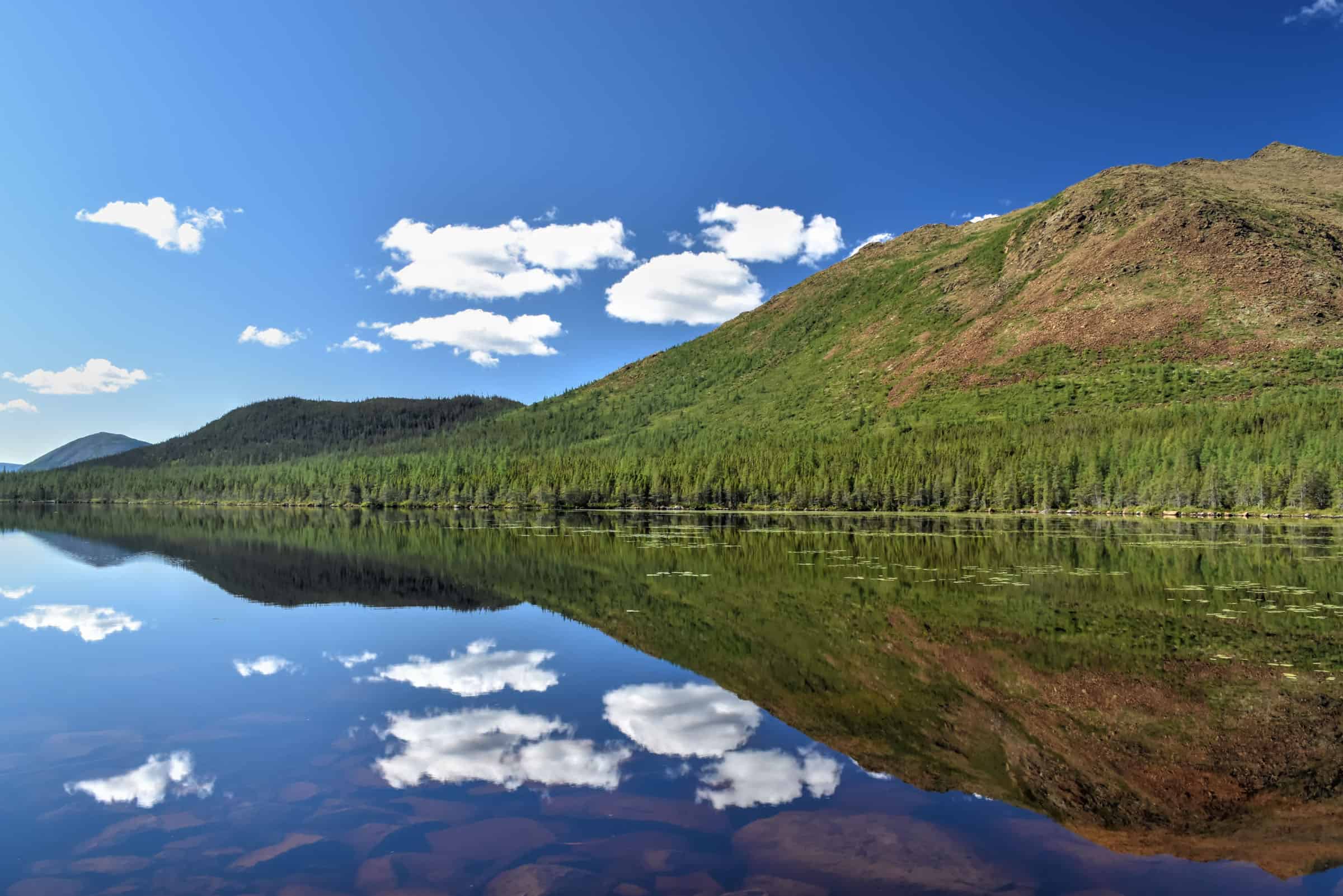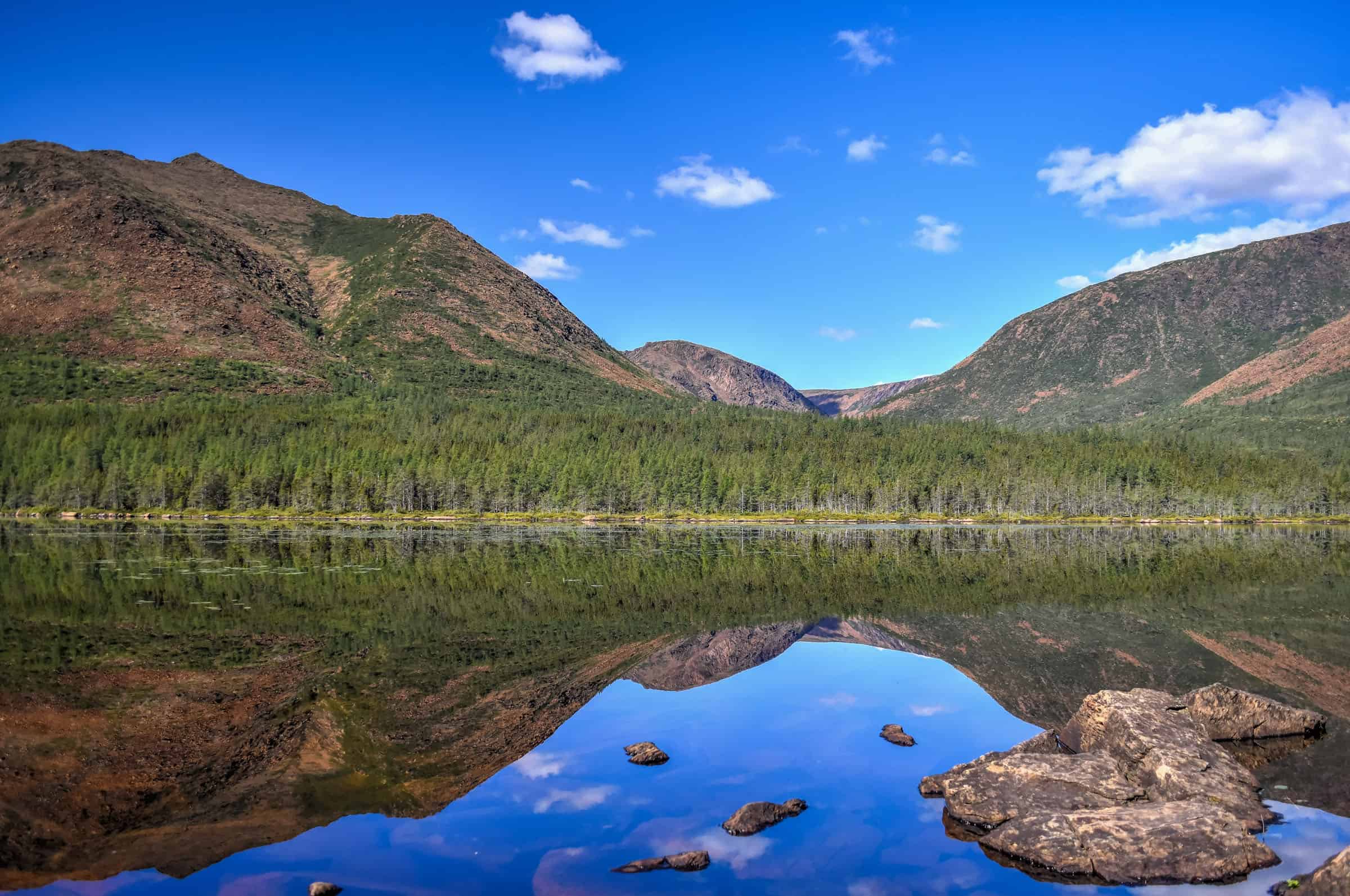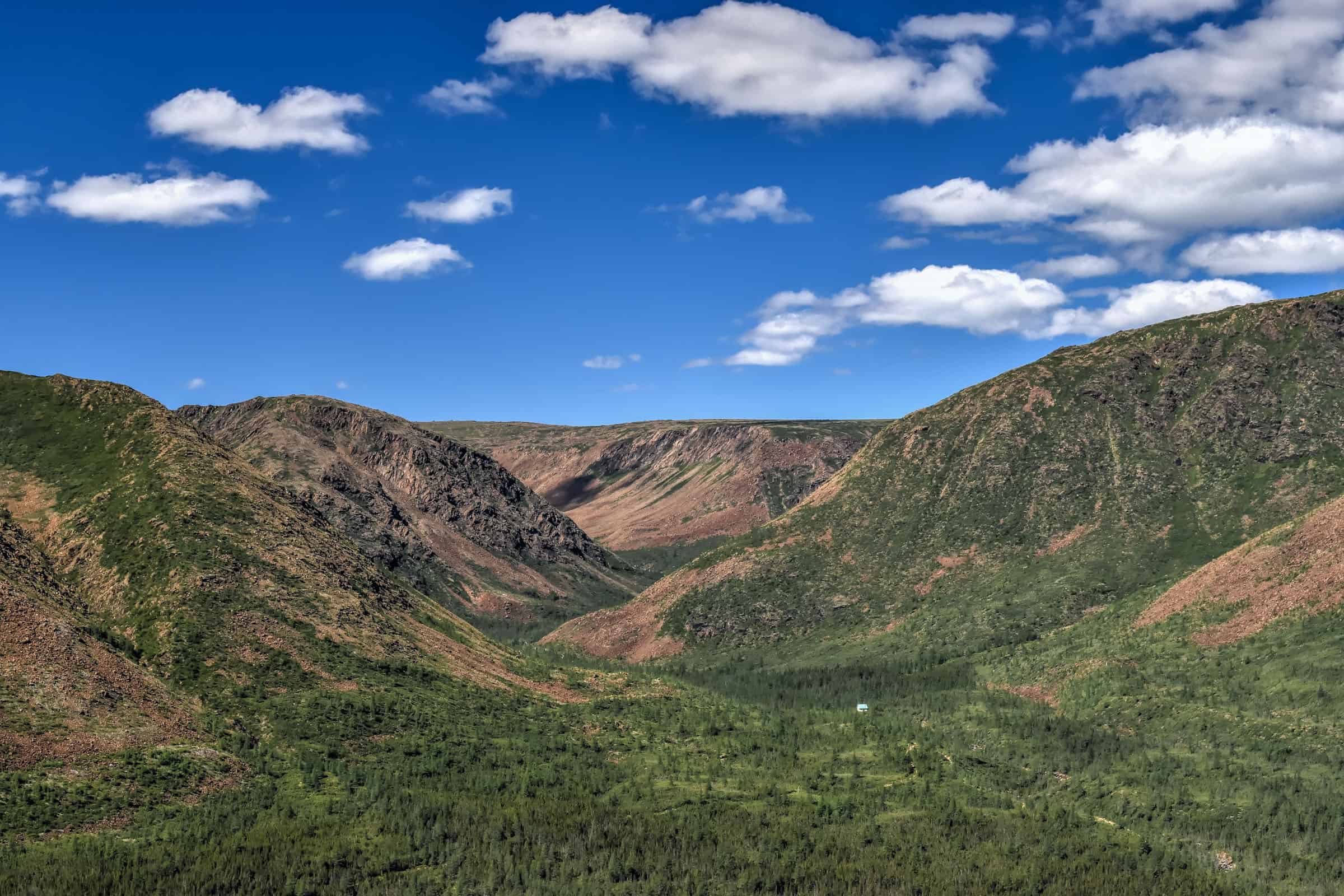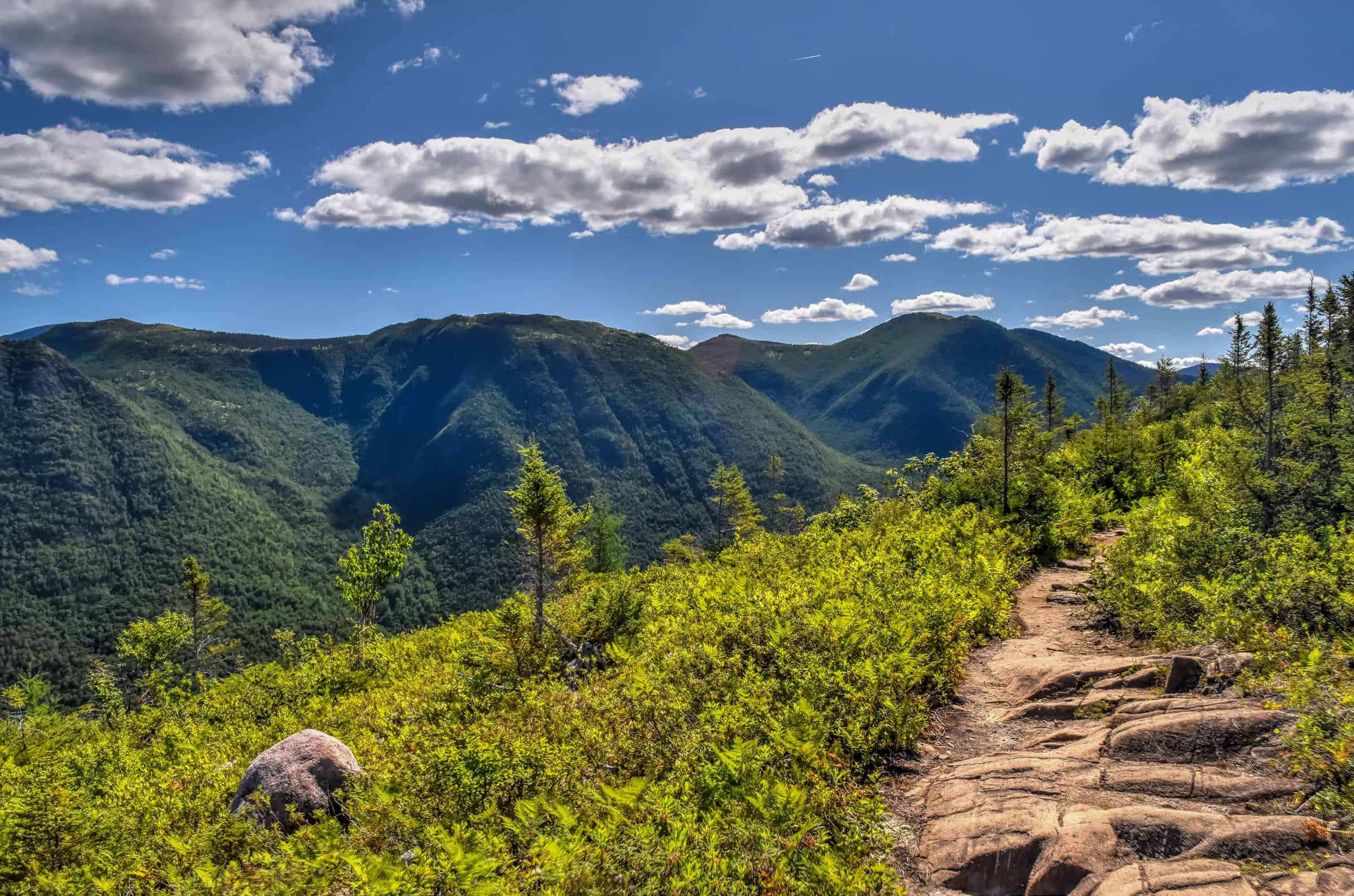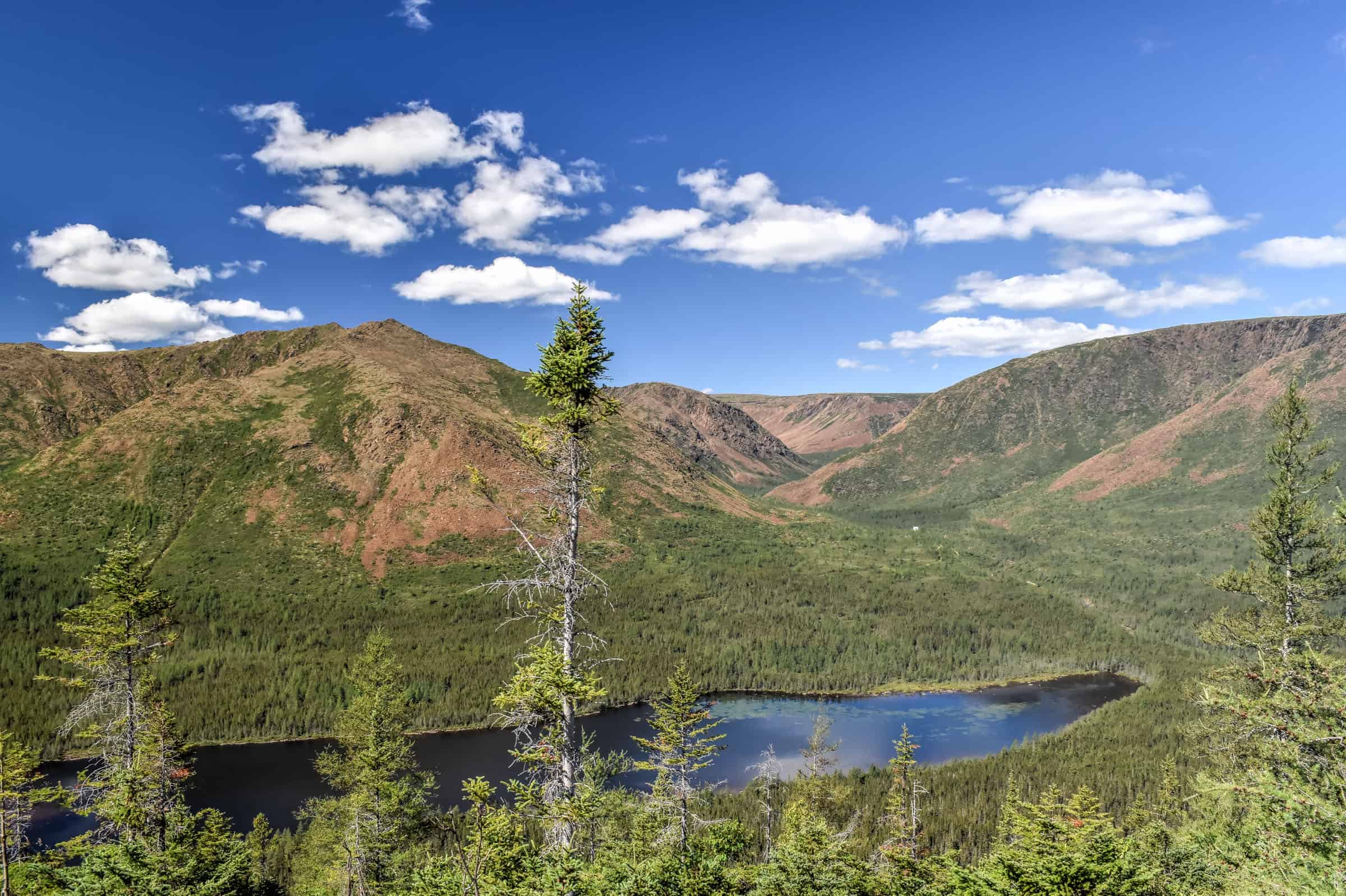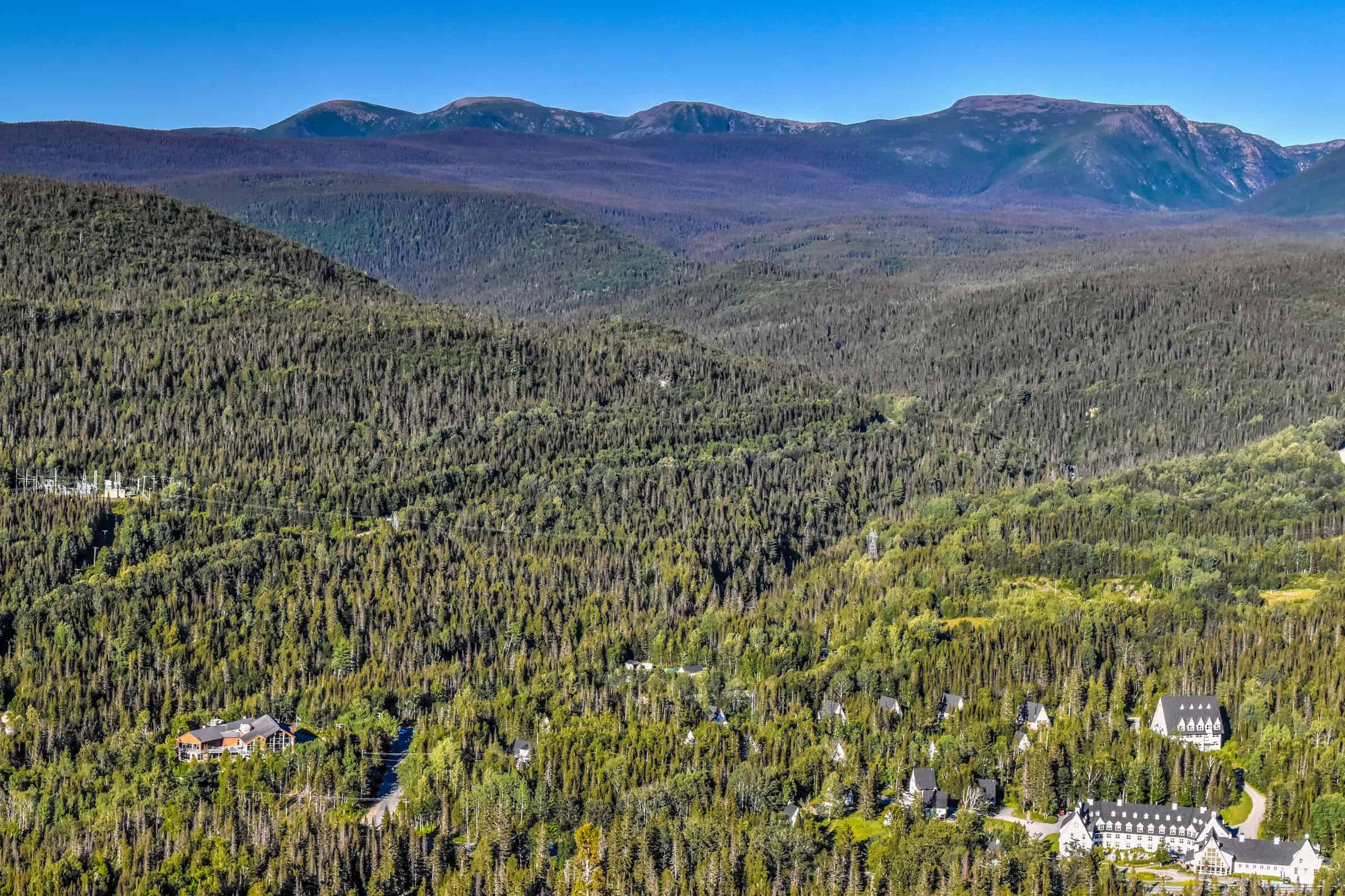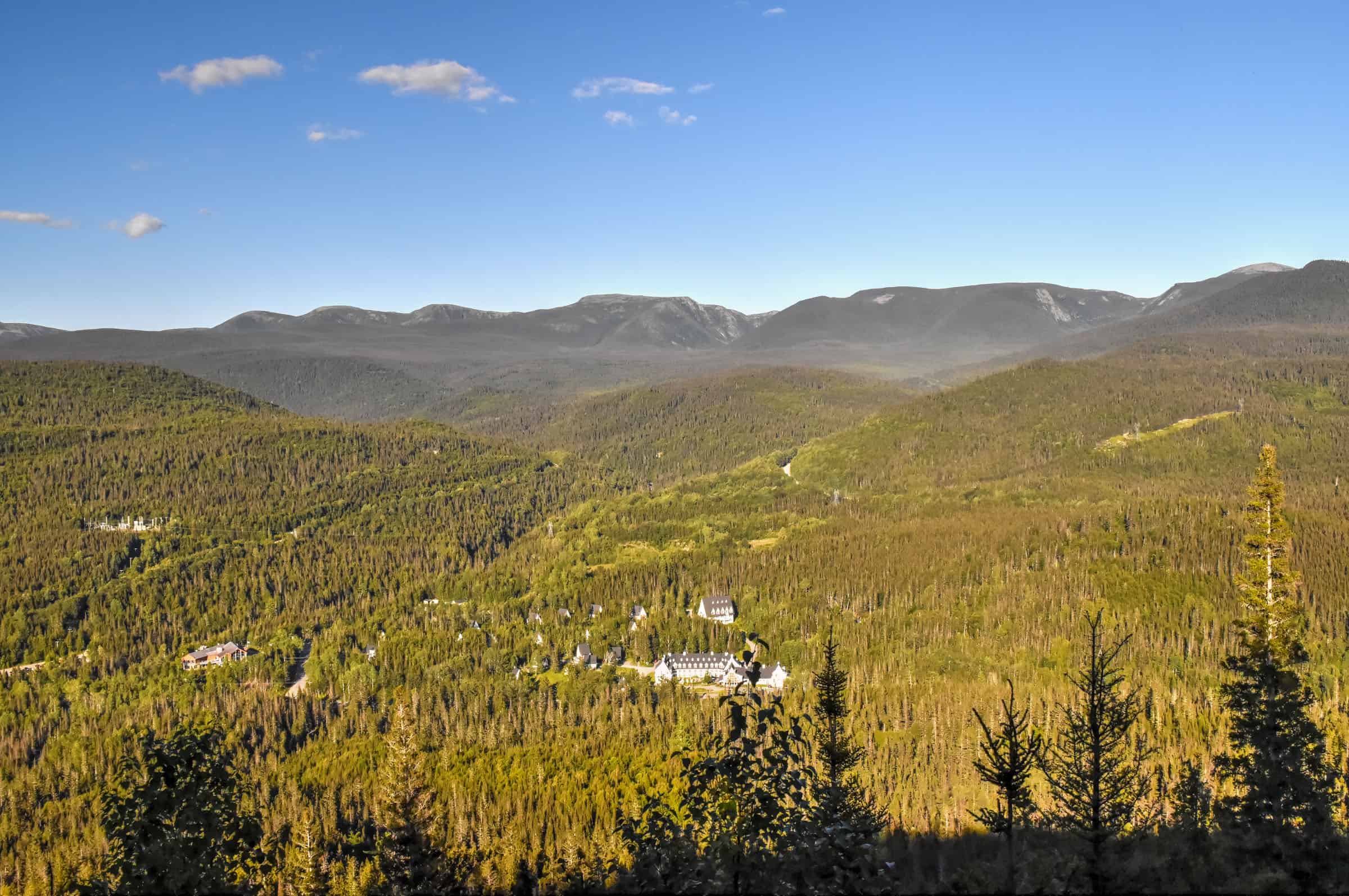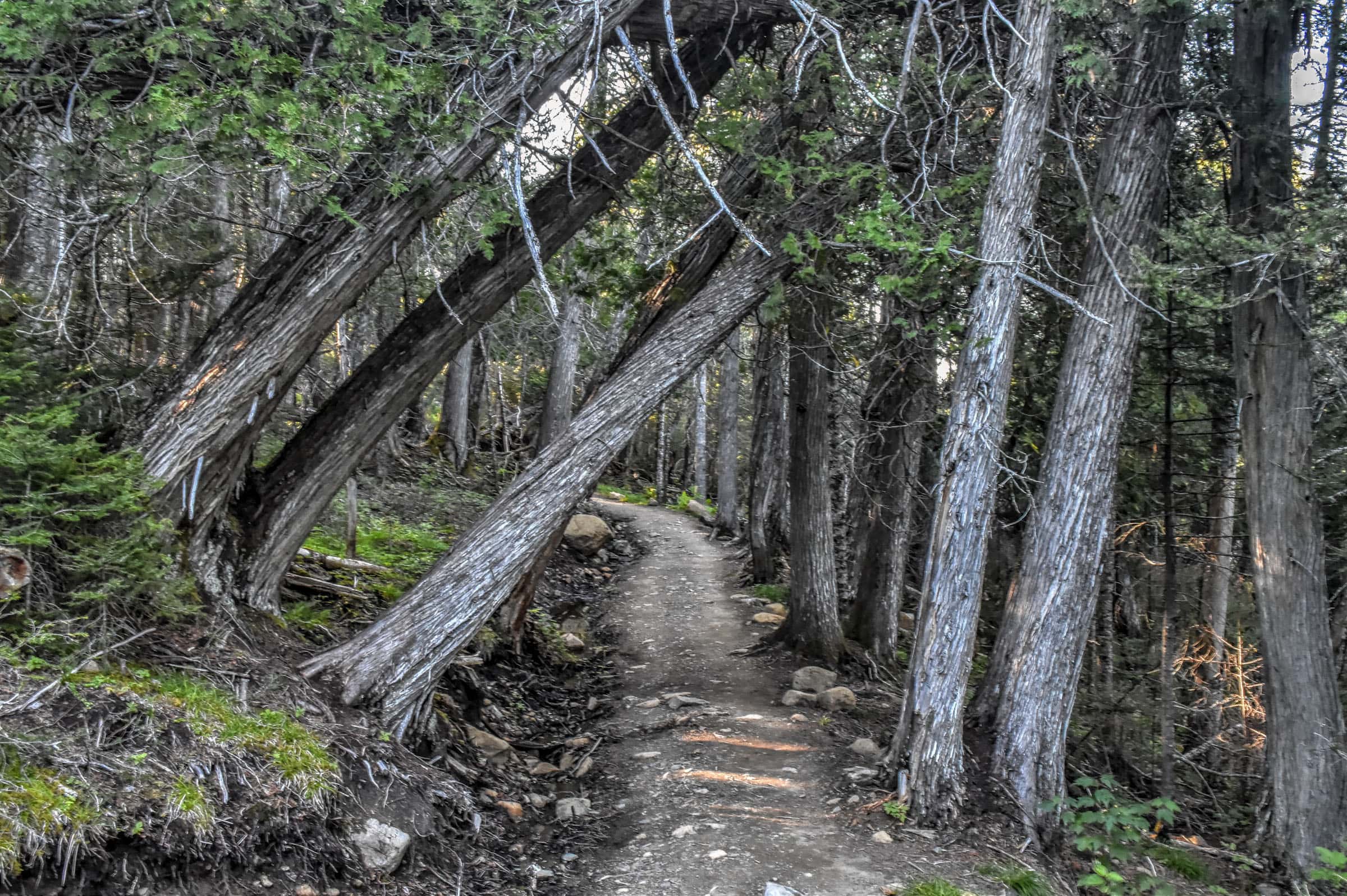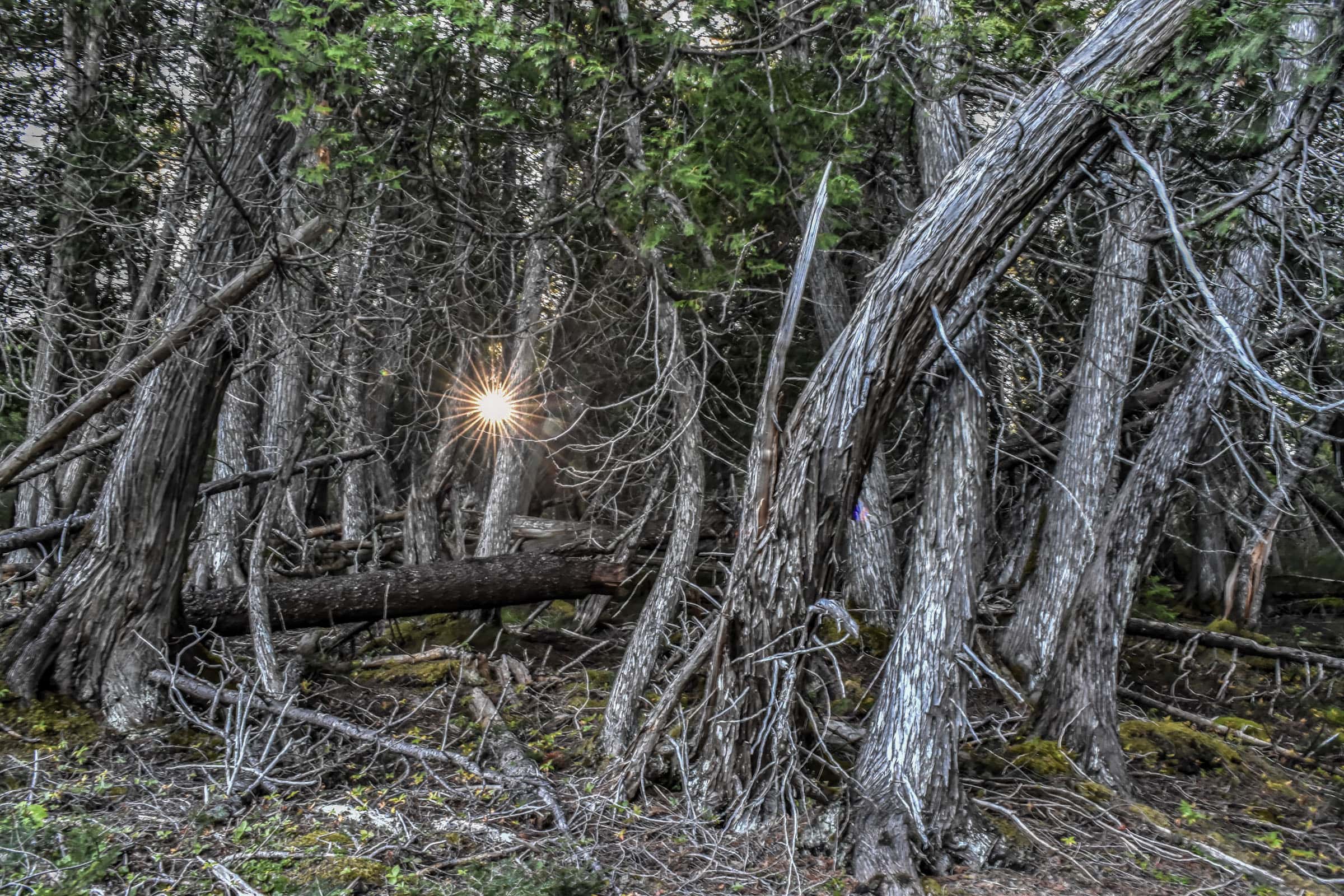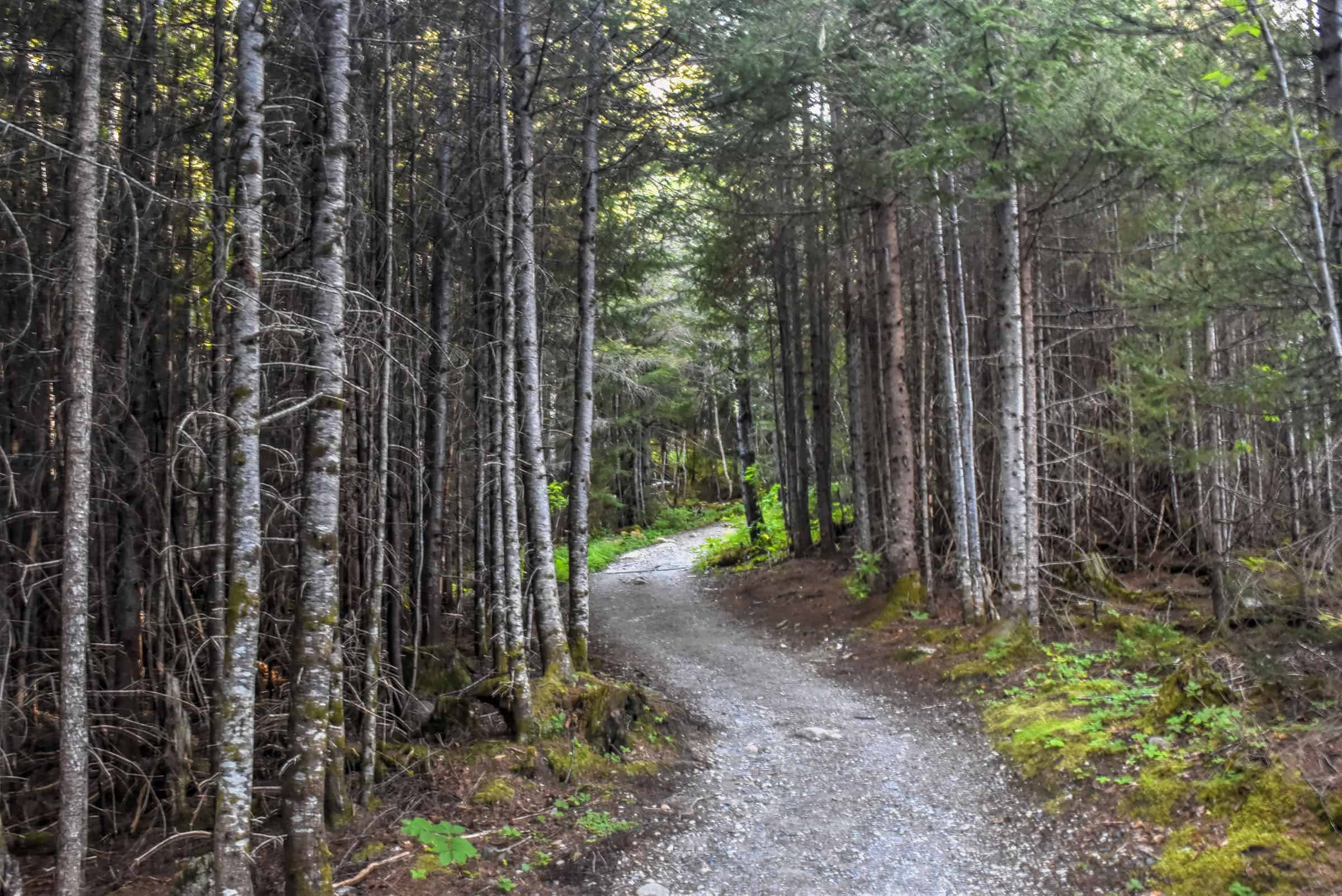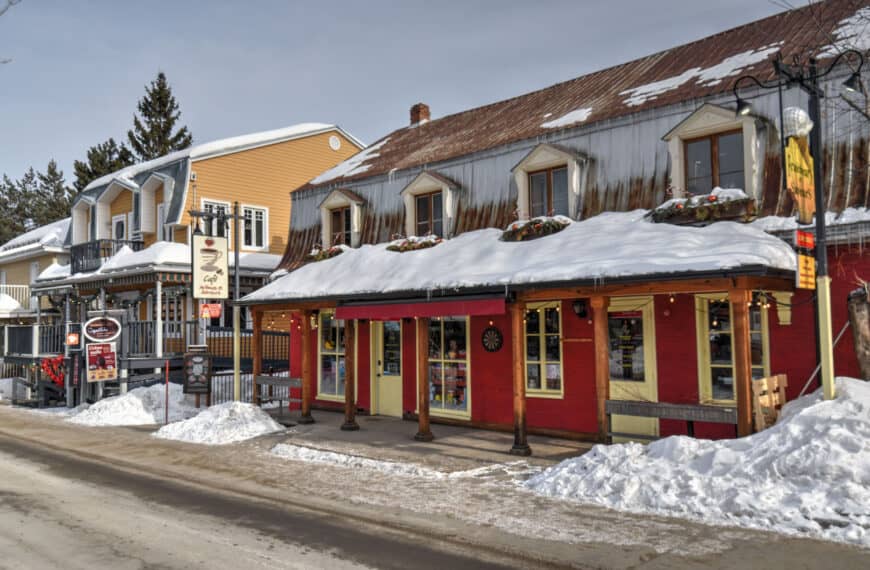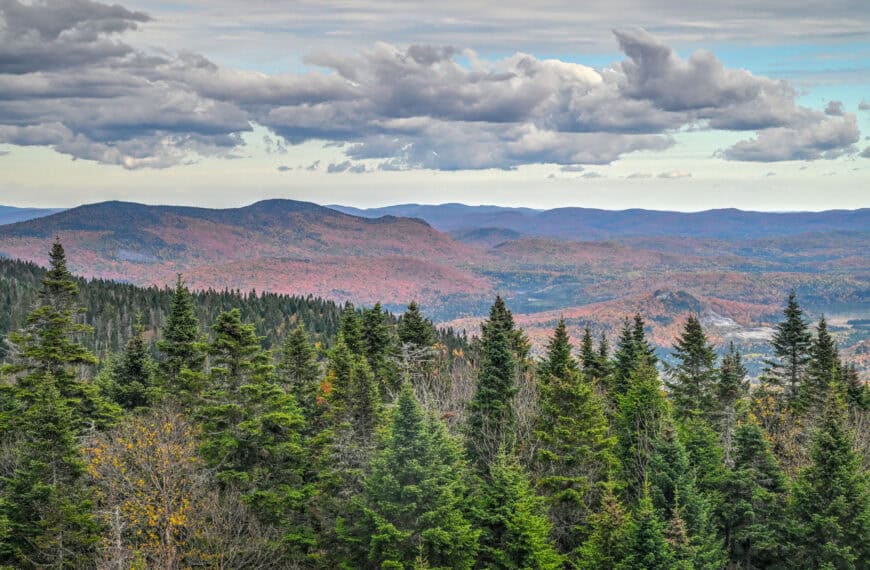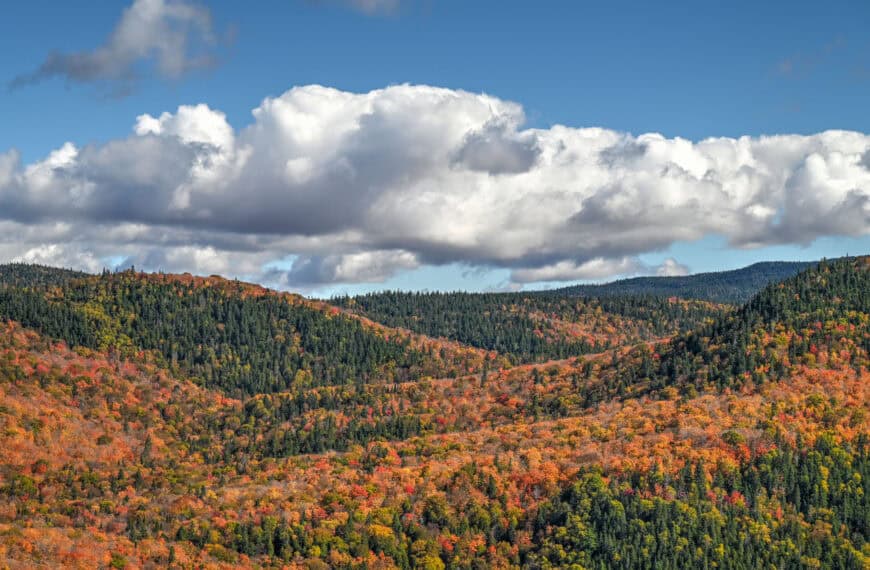Gaspésie National Park is a hiker’s paradise in Quebéc’s somewhat remote eastern region of Gaspésie. Although the Gaspésie region is primarily known for its scenic coastal landscapes and its fresh seafood, Gaspésie National Park is located in the heart of the region’s mountainous region, with 25 peaks towering over a thousand metres (3,280 ft). The park is known for its rugged mountains and fantastic hiking opportunities (including the International Appalachian Trail that runs through the park). Below we will present our list of the Best Hiking Trails in Gaspesie National Park, with a focus on those trails that maximize the effort-to-reward ratio within the central Mont Albert Sector of the park.
Disclosure: This page (Best Hiking Trails in Gaspesie National Park) may contain product affiliate links. At no additional cost to you, we may receive a commission for purchases made through these links. . More details can be found on our disclosure and policies page.
You might also be interested in these pages:
Gaspésie Best Attractions and Road Trip Itinerary
10 Awesome Hiking Trails to Discover in Gaspésie
Best Things to See and Do Percé
Gaspésie’s Most Beautiful Lighthouses











Gaspesie National Park Location
Gaspésie National Park (blue pin on the maps below) is located about 525km from Québec City (5h30 dive time), and 750km from Montreal (8hr drive time). If coming from New Brunswick, it’s about a 5h30 drive from Moncton.

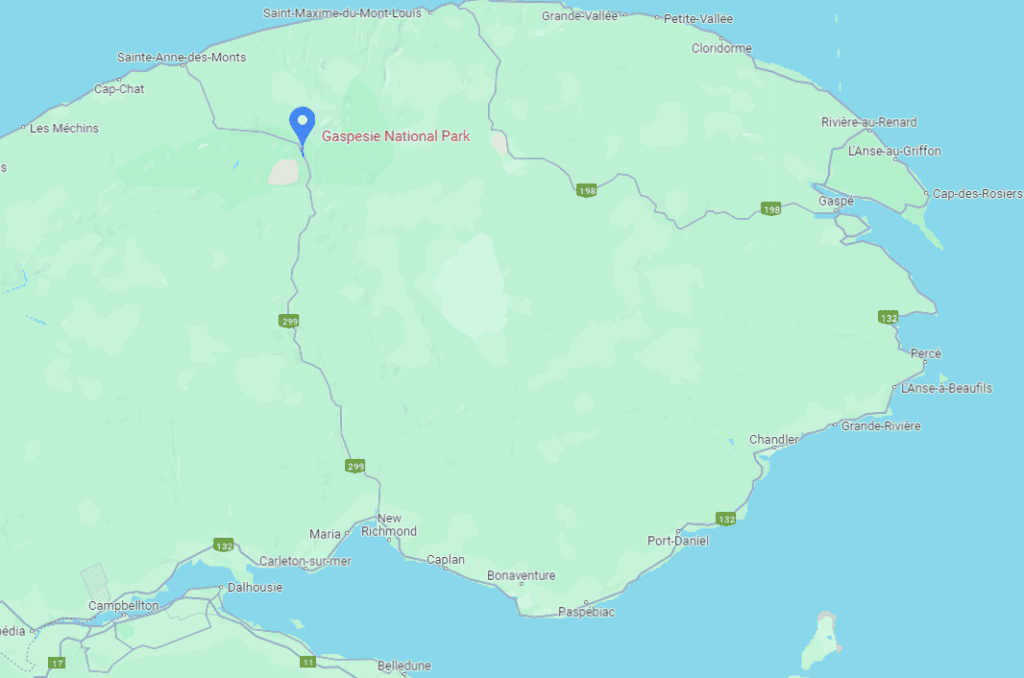
The closest town to Gaspésie National Park is Sainte-Anne-des-Monts (pop. 7,000), which is about a 30-minute drive from the Park’s Discovery and Visitor Center. The town of Gaspé (Gaspésie’s largest city) is about 2hrs away while the tourist town of Percé is about 3hrs away.
Most people will visit Gaspésie National Park (and the Gapsé Peninsula) via a road trip from Montreal or Québec City. Although it is a long drive, it is a very scenic one, particularly as you get east of Québec City. Gaspésie National Park is a must-visit destination as part of any Gapésie Road Trip Itinerary.
If you need to book a rental vehicle for your hiking excursion, we highly recommend using Discover Cars to get the best rates on your rental in Montreal.
We also highly recommend Airalo (eSIM card) for your connectivity needs when travelling abroad. Airalo is the world’s first and largest eSIM store with eSIM plans for 200+ countries and regions worldwide.
An alternative but less practical way to reach the park is to take a bus with Orleans Express from either Montreal, Ottawa or Québec City towards Gaspé, and get off at Sainte-Anne-des-Monts. From there, you can take a shuttle connecting the town to the national park. The shuttle runs from July 1st to September 30th, with a 7h45 am departure from Sainte-Anne-des-Monts and a 5 pm return from the park’s Discovery and Visitor Center ($9.50 for a return ticket (2024)).
Gas Stations
Though there are no gas stations in Gaspésie National Park, the closest ones are about 30 minutes away, both to the south and the north of the park.
About Gaspesie National Park
Gaspésie National Park is one of 28 Quebec National Parks, the majority of which are administered by the Société des établissements de plein air du Québec (SÉPAQ) (Nunavik Parks administer the others). Although all provincial parks in Quebec have used the term “national park” since 2002, there is no connection to the federal national park system, administered by Parks Canada.
Gaspésie National Park became the third protected park in Québec in 1937 but it wasn’t accessible to the public until 1949 due to developmental work being interrupted by the Second World War. The primary goal behind the park’s creation was to protect the only caribou herd south of the St. Lawrence River.
The park is a hiker’s paradise, with more than 25 peaks reaching over 1,000 meters, including the highest peak of the Appalachian Mountains in Canada, Mont Jacques-Cartier, at 1,270 metres (4,170 ft) above sea level.
Interestingly, there are two major and geologically distinct mountain ranges in the park. The first one, to the west of the St-Anne’s River that roughly splits the park down the middle, is the Chic-Choc Mountain range. This range is 600 million years old and was mainly formed from underwater volcanic activity, and includes among others, Mont Albert and Mont Logan. In contrast, the McGerrigle Mountains are much younger, only 380 million years old, and include Mont Jacques-Cartier in the eastern portion of the park.
Gaspésie National Park Schedule and Access Fees
The national park is open year-round, with snowshoeing and cross-country skiing being the main activities. However, the Discovery and Visitor Center is only open from mid-May to mid-October (summer activities) and from mid-December to mid-April (winter activities).
All Quebec National Parks (including the Gaspésie National Park) charge the same access fees and you can buy an annual pass that allows unlimited access to all parks.
Daily access fees and Annual passes
Quebec National Parks are managed by the SÉPAQ, a government agency that manages all provincial parks and wildlife preserves in Québec.
There is a limit to the number of visitors that can enter any Québec SÉPAQ National Park on any given day. It is therefore strongly recommended that you purchase your daily right of access online before a visit or that you acquire an annual pass.
The daily pass ($9.85 (2024)) can be purchased here up to 30 days before a visit.
The annual pass can be purchased here either for unlimited access to a single national park ($49.25 (2024)) or for unlimited access to all SÉPAQ national parks ($88.50 (2024)). Even if you have an annual pass, we still recommend arriving early in the morning or mid-to-late afternoon to avoid showing up to a filled parking lot.
Gaspésie National Park Layout
Gaspésie National Park is divided into three sectors: the central portion of the park is known as the Mont Albert sector, which is where you’ll find the park’s Discovery and Visitor Center, the Gites du Mont-Albert (a fantastic Inn, the park’s main non-camping lodging option), and the majority of the hiking trails. To the east lies the Mont-Jacques Cartier sector, which is home to two trails (Mont Jacques Cartier & Mont des Pics), and to the west lies the Lac-Cascapédia sector, which is home to three trails (including the Pic du Brûlé and the Pic de l’Aube). The International Appalachian Trail (IAT) runs through all through sectors.
Lac-Cascapédia sector

Mont Albert Sector & Mont-Jacques Cartier sector

Both the Discovery Center and the Gite du Mont-Albert (the park’s main non-camping accommodation option – see below) are located in the Mont-Albert sector near the trailhead of several great hiking trails.
Where to Stay Near Gaspésie National Park
There are several options to stay within the park, ranging from standard campgrounds to rustic chalets and cabins.
We can highly recommend staying in the Gite du Mont-Albert, which provides the best combination of comfort and central location. It’s a beautiful Inn, located in the center of the park a short walk from several trailheads and the Discovery and Visitor Center. There’s also a fantastic restaurant, spa and outdoor swimming pool on site.



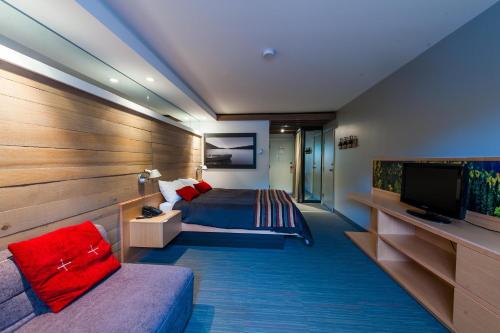
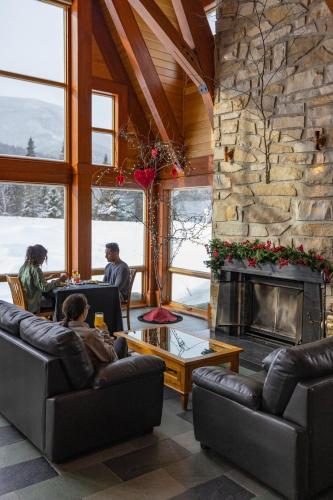
Alternatively, if you want to stay by the water in a more urban setting, several accommodation options can be found in Sainte-Anne-des-Monts, a 30-minute drive north of the park.
Best Gaspésie National Park Hiking Trails
Gaspésie National Park is popular among avid hikers, particularly because of the several trails that reach high summits. In the context of this guide, we will focus on trails located in the central sector (Mont-Albert) as they are the most accessible and offer a wide range of difficulty levels. We will also focus on trails that we believe maximize the effort-to-reward ratio and will include a variety of easy, moderate, moderately challenging, and challenging (difficult) trails.
For those looking for some of the most challenging trails the park has to offer, they will be briefly highlighted towards the end of this guide.
You will also likely notice as you go through the trail list below, the park’s shorter trails, particularly near the Discovery Center, are simply shorter and abbreviated versions of some of the park’s longer trails. For instance, one of our favorite trails, the Mont Olivine trail, can be broken down into at least four different sub-trails, each culminating at its own specific viewpoint or attraction, such as a waterfall or a lake. The choice comes down to what you want to see and how long (or high) you want to hike for.
La Chute-Sainte-Anne Trail / La Lucarne Trail (easy)
This is a nice and easy family hike with a beautiful waterfall as a midway reward. The path itself is flat and accessible and ascends at a very slow pace.









The Gaspésie National Park refers to the Chute-Sainte-Anne Trail as the shorter out-and-back version of the trail to a viewpoint of the Chute-Sainte-Anne waterfalls, whereas it refers to the Lucarne Trail as the slightly longer loop version that goes on both sides of the river (on All Trails, only the loop version exists and is call the Chute-Sainte-Anne Trail). We recommend the loop trail for more diverse scenery: half the trail follows the valley floor along the river and the other half is slightly higher in elevation through varied forested sections.
Distance: 2.4 km
Route Type: Loop
Elevation gain: 60 m (cumulative elevation gain: 73 m)
Start point: Discovery Center
AllTrails rating: (4.4, 103 ratings (2024))
Duration: Most people complete the trail in about 30-45 min
Access Fees: SEPAQ daily rate
The main trailhead is near the Discovery Center, but as depicted in the AllTrails map below you can also start it near the Chute Saint-Anne car park. However, we don’t recommend starting there as the car park is rather small and is primarily intended for those who want to quickly view the falls without having to hike the trail.
Alternative routes: 1) If starting from the Discovery Center, you can turn your hike into a shorter out & back hike by turning around once you’ve reached the falls, about 0.8 km from the Center (this is what the Gaspéie National Park website considers the “La Chute-Sainte-Anne” trail in its trail descriptions). 2) You can also make the trail slightly longer by taking a different return route through the forest behind the Gite du Mont-Albert instead of the path on the other side of the river. This trail alternative option will stretch the loop trail to 3.1 km in total.
Lac-aux-Américains Trail (easy)
This trail was definitely one of our favourite “easy” hikes in Gaspésie. At the end of a short trail with a constant uphill but easy climb, you’ll end up in front of an alpine lake (Lac-aux-Américains) known as a glacial cirque, a bowl-shaped depression/valley formed by glacial erosion. The name of the lake, which translates to “American Lake”, is a nod to a time when US botanists had set up a research base camp along the lake’s shores in the early 20th century.





We arrived early in the morning and had the lake to ourselves, where we could enjoy the wooden pier and the beautiful scenery in a tranquil setting. Though the trail isn’t very long, you might want to hang around by the lake for a while.






Distance: 2.9 km
Route Type: Out & Back
Elevation gain: 92 m (cumulative elevation gain: 104 m)
Start point: Mont Xalibu Car Park
AllTrails rating: (4.6, 299 ratings (2024))
Duration: Most people complete the trail in about 45-60 min
Access Fees: SEPAQ daily rate
The car park and trailhead are 7 km (10-minute drive) from the Discovery Center, along a gravel road.
Mont Ernest-Laforce Trail (moderate)
This is one of the more popular trails in the park due to its accessibility, moderate difficulty, and rewarding 360° unobstructed views from the summit. You’ll get fantastic views of Mont Olivine and Mont Albert across the valley.





The trail ascends fairly steadily from the car park until you reach the summit. Initially, you will through forested sections, but you won’t need to wait long to enjoy panoramic views of the surrounding scenery as they will quickly reveal themselves as you start the loop section. Here the trees give way to a meadow-like environment where tall grasses frame the distant mountains.








Distance: 4.6 km
Route Type: Out & Back
Elevation gain: 175 m (cumulative elevation gain: 187 m)
Start point: Mont Ernest-Laforce Car Park
AllTrails rating: (4.6, 734 ratings (2024))
Duration: Most people complete the trail in about 1h30-1h45 min
Access Fees: SEPAQ daily rate
The car park and trailhead are 7 km (10-minute drive) from the Discovery Center, along a gravel road. The park recommends doing the loop section of the trail in the counter-clockwise direction, and we agree that this is the most rewarding direction.
Not an AllTrails member yet? We highly recommend signing up for either their free or paid membership plans. The free plan allows you to find new trails and plan routes but it can only be used while hiking if you have access to mobile data. The paid membership plan (AllTrails+) allows you to download trail maps for offline use and provides live progress updates and off-route notifications.
If you are still uncertain – you should know that the All Trails mobile application was voted the 2023 iPhone App of the Year by Apple.
La Chute-du-Diable (moderate) & Lac-du-Diable (moderately challening) Trails
These trails are both an extension of the Chute-Sainte-Anne trail highlighted above – instead of turning back or taking the loop trail after having reached the falls, you continue south following the river and valley floor. Weirdly, the national park considers the La Chute-du-Diable (another waterfall) the destination, whereas AllTrails considers the Lac-du-Diable (lake) the destination. Both follow the exact same path, only your stop point will differ.



The first section following the Chute-Sainte-Anne waterfall is very straightforward and stays relatively flat for quite some time until you eventually cross a wide river over a bridge.



After crossing the river, the trail starts to rise sharply, but you will reach the waterfall viewpoint just a few minutes after having crossed the river.
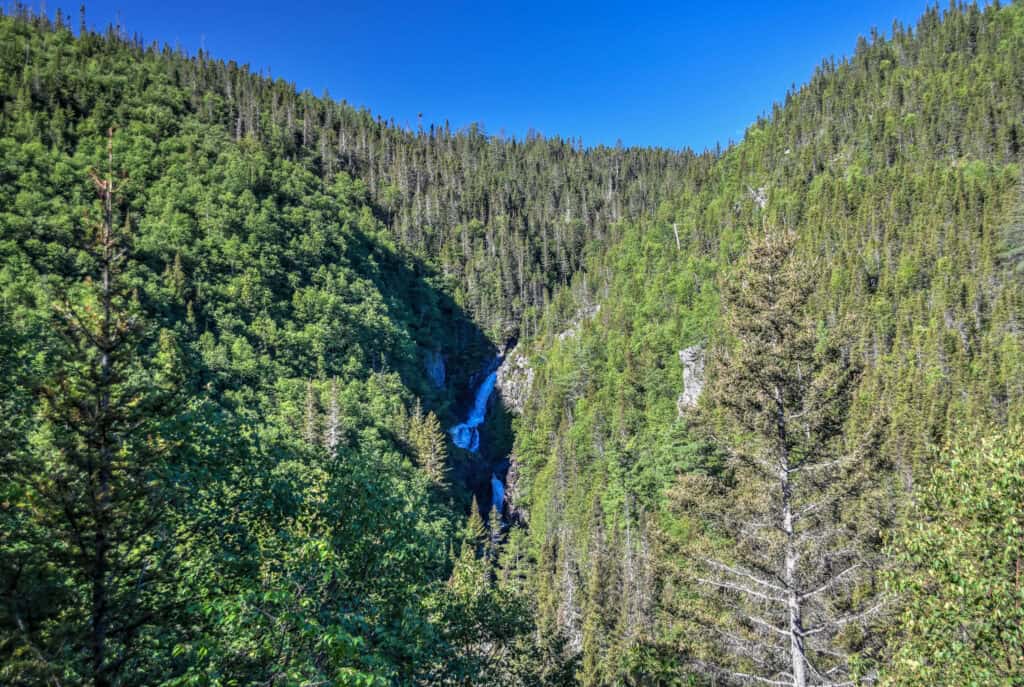
Although continuing from this point towards the lake doesn’t add much distance to the trail (1.25 km each way), the path between the waterfall and the lake is significantly steeper and more challenging (very rocky and uneven terrain) – so that’s something to consider when deciding on how far you want to go.
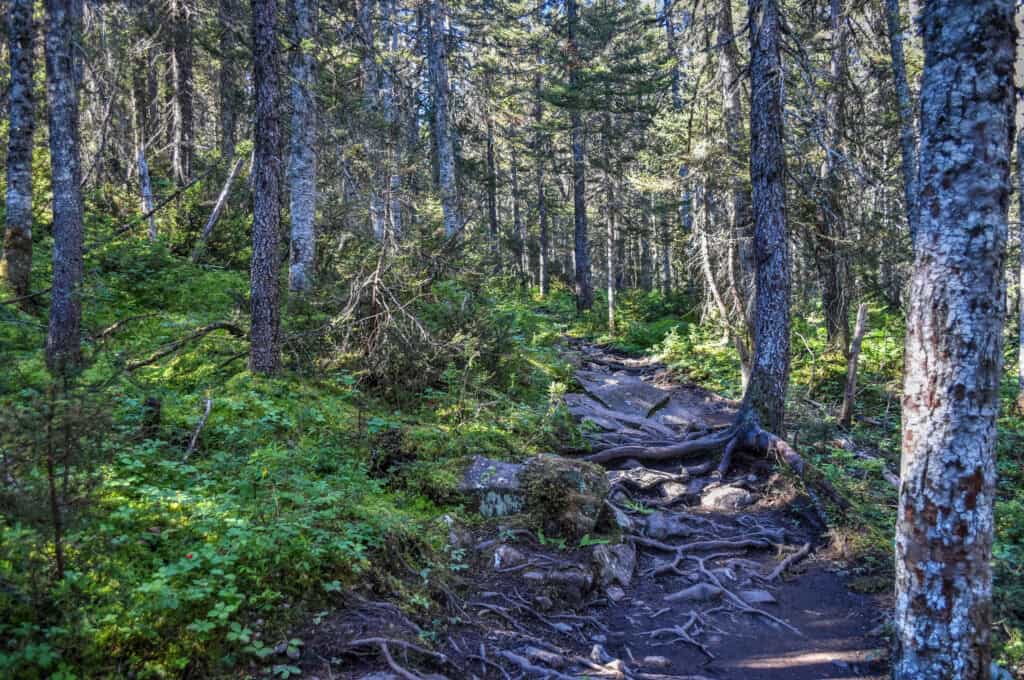
After a steady climb over about 1 km, you will reach a trail intersection: go right to head towards the lake. You will cross over a series of raised wooden boardwalks as you make your way there.



After a few minutes, you will have arrived at the stunning Lac-du-Diable.





We personally found the lake significantly more impressive to see than the waterfall. The waterfall is seen from a distance, whereas you can walk along the lakeshore. And if you get lucky like we did on a day with no wind, the lake acted as a perfect mirror.
Distance: 9.5 km (lake), 6.5 km (waterfall)
Route Type: Out & Back
Elevation gain: 310 m (cumulative elevation gain: 477 m) (lake); (130 m, waterfall)
Start point: Discovery Center
AllTrails rating: (4.5, 102 ratings (2024))
Duration: Most people complete the trail in about 3h-3h30 (lake), 1h45h-2h15 (waterfall)
Access Fees: SEPAQ daily rate
If you decide to make your way up to the lake, you might as well continue along the trail to reach the Mont Olivine summit! (see next trail)
Mont Olivine Trail (moderately challenging)
If you made it to the lake (Lac-du-Diable), you might as well continue a bit further to get some of the best views of the national park. The Mont Olivine Trail was our favorite trail in the park, since it combined Chute-Sainte-Anne (waterfalls), Chute-du-Diable (waterfalls), Lac-du-Diable (lake) and the panoramic views from the Mont Olivine summit.
Once you reach the intersection for the trail leading to the lake, it’s only another 1km to reach the summit of Mont Olivine (though it’s another 150 m of the revelation gain. The last bit of climbing is done along a ridgeline offering stunning views on either side of the mountain: to one side the Saint-Anne River valley and to the other the towering Mont Albert.



Distance: 10.3 km
Route Type: Out & Back
Elevation gain: 470 m (cumulative elevation gain: 570 m)
Start point: Discovery Center
AllTrails rating: (4.7, 209 ratings (2024))
Duration: Most people complete the trail in about 3h30-4h
Access Fees: SEPAQ daily rate
Note: the AllTrails map to the Mont Olivine summit doesn’t include the short detour to Lac-du-Diable (lake). Adding the lake detour increases the trail distance to 11 km, but doesn’t add any elevation gain.
Hiking Packing List
All Trails subscription – This comes in really handy for areas with little or no cell reception, as the annual subscription allows you to download trail maps for offline use.
External Battery – If you are using your phone to track your progress along the trail or to help with navigation, you certainly don’t want your phone to die on you. That’s especially true in the unlikely event that you might get hurt or need assistance.
Hiking poles – These can be particularly useful in steep trails or muddy/boggy trail conditions.
Water Filter Bottle – The Life Straw bottle is an advanced water bottle with a filter that not only improves water taste but more importantly filters out bacteria and parasites, chemicals and microplastics.
Headlamp – very practical and a smart choice if you plan to start your hike before sunrise or finish it after sunset.
Mont-Albert North Face (challenging)
Probably the park’s most famous and most popular trail amongst those that are considered challenging. It’s a steady and steep climb through a beautiful forested trail with some rewarding views of the surrounding mountainscape.






Distance: 14.8 km
Route Type: Out & Back
Elevation gain: 855 m (cumulative elevation gain: 969 m)
Start point: Discovery Center
AllTrails rating: (4.8, 259 ratings (2024))
Duration: Most people complete the trail in about 3h30-4h
Access Fees: SEPAQ daily rate
Additional info: Note that to protect the native Caribou, the trail is only open every year from mid-June to early October every year.
Trail Alternatives:
La Saillie: An easier and shorter version of the trail that stops at an early viewpoint along the Mont Albert North Face trail and then returns back (4.2 km total, 200 m elevation – not on AllTrails).





Mont Albert Loop: If the north face trail isn’t enough for you, you can extend the hike by looping around the mountain (20.3 km, 1137 m elevation gain)
Other trails
Other popular hiking trails in the park include Mont Richardson, Mont Joseph-Fortin, Mont Jacques-Cartier (McGerrigle sector), and the Pic du Brûlé (Lac-Cascapédia sector), which all fall in the difficult trail category. Mont Jacques-Cartier is particularly appealing to many as its the highest peak in the park (though note that the season to hike this trail is limited to just a few months to protect the caribou).
Gaspesie National Park Trail Tips
Be sure to check the trail conditions before undertaking a hike to be aware of closures, particularly in late spring and early summer due to snow melt and Caribou protection measures.
Mosquitoes and black flies can be a nuisance at certain times during the year. The exact dates vary from year to year, but they are generally most present from mid-May to mid-July. Regardless of when you come, it’s always a good idea to carry some bug spray with you, just in case.
Stick to the designated path to protect the surrounding environment.
Best Time to Visit Gaspésie National Park
Though the park is open year-round if you want to enjoy standard hiking activities we highly recommend visiting towards the end of summer and early fall (August, September and October). The weather will be pleasant and the likelihood of being harassed by bugs is significantly reduced. Moreover, July is when most people in Québec take their summer holidays.
Nearby National Parks with Great Hiking Trails
We can recommend a few other areas if you are looking for additional hiking trails while visiting Gaspésie.
Forillon National Park
Forillon is actually part of the Canadian National Park Network, one of only two in Québec. It is located at the very eastern tip of Gaspésie, where mountains (the eastern end of the Appalachian Mountains) meet the sea. The park is a unique ecosystem of mountains, sea cliffs, beaches and salt marshes, and is a place where you are likely to see plenty of land and marine wildlife. Forillon is just 200 km away from Gaspésie National Park, about a 2h30 drive away.






For more information on visiting and the best hiking trails, check out our Forillon National Park guide.
Île-Bonaventure-et-du-Rocher-Percé National Park
Just an hour south of Forillon is the unique Île-Bonaventure-et-du-Rocher-Percé National Park, which is composed of two distinct areas: the region’s famous Rocher Percé (pierced rock) that juts out of the water just off the coast, and Bonaventure Island, which accessible only by boat, where you will find beautiful coastal hiking trails and the world’s second-largest Northern Gannet colony.











For more information on visiting and the best hiking trails, check out our Île-Bonaventure-et-du-Rocher-Percé National Park guide (though we cover visiting the Rocher Percé in a separate guide (Best things to see and do in Percé).
BIC National Park
Though not in Gaspésie, you are likely to pass by BIC National Park on your way to or from there if visiting from southern Québec. The park is 240 km southwest of Gaspésie National Park, just under a 3-hour drive. BIC National Park is a unique coastal environment where you will find scenic hiking trails among capes, bays, coves, islands, salt marshes and steep peaks. Here the tides play a role, as several trails are only accessible during low tide. It’s also a great park for marine wildlife sightings the many harbour and grey seals that frequent the waters of the park.






For more information on visiting and the best hiking trails, check out our BIC National Park guide.
Planning a trip to Gaspésie?
You might be interested in these pages (coming soon):
Gaspésie Best Attractions and Road Trip Itinerary
10 Awesome Hiking Trails to Discover in Gaspésie
Gaspésie’s Most Beautiful Lighthouses
We also highly recommend these guidebooks:
Lonely Planet Best Road Trips Ontario & Quebec
Gaspé the Romantique ‘Revisited’: A Road Trip Guide to the History, Legends and Attractions
Want to Discover More Quebec Hiking Trails?
You might be interested in these pages (coming soon):
Best National Parks for Hiking Near Montreal
Best Hiking Trails in the Laurentians
Best Hiking Trails in the Eastern Townships
Photography Gear
If you like our photography, you might be interested in some of the gear we use to shoot our travel and hiking destinations.
Camera Body – Nikon Z 6ii Fx-series Mirrorless Body
Main Lens – NIKON 24-120mm F/4G ED VR AF-S
Zoom Lens – Sigma 745-306 150-600mm f/5-6.3
Polarizing filters – Urth Circular Polarizing (CPL)
Camera Tripod – K&F Concept 64-inch Camera Tripod
Mini-tripod – Lammcou Flexible Camera Tripod
Camera/hiking backpack – Vanguard Alta Rise 48 Backpack
Universal Travel Adapter – VYLEE Universal International Power Travel Plug
Other Travel Essentials
Travel Insurance
SafetyWing is a travel insurance company that offers comprehensive coverage for travellers. Includes Medical Insurance and Travel Insurance. Primarily geared towards long-term travellers, digital nomads, and expats.
e-Sim cards
Airalo is the world’s first and largest eSIM store with eSIM plans for 200+ countries and regions worldwide. With Airalo eSIMs, travellers can get connected the moment they land at their destination and avoid nasty data roaming charges
eSIMS are a sustainable alternative to single-use SIM cards – they are 100% digital, require less energy to produce and be re-used rather than disposed of.
Car Rentals
Discover Cars is our go-to website for car rentals. We almost always find our preferred rate there.
Transfer from Airport
Welcome Pickups is our favourite private transfer service, which you can pre-book at a fixed price. Currently available in 220 cities all over the world (mostly in Europe, but with several major cities in Asia, the Middle East and the US).
Kiwitaxi is another private transfer service – we haven’t tried it yet, but it’s currently available in a few more countries (102 as of 2024).
Hotels and Accommodations (coming soon)
Photography Prints
If you found this blog useful, you can help support our blog by purchasing low-cost digital prints. Printed physical prints are also available for purchase.








—–
Well, that wraps it up! We hope you enjoyed our Best Hiking Trails in Gaspesie National Park and that it will prove useful for planning your trip and hiking activities in the Gaspésie region of Québec.
—–
You might also be interested in these related pages:
